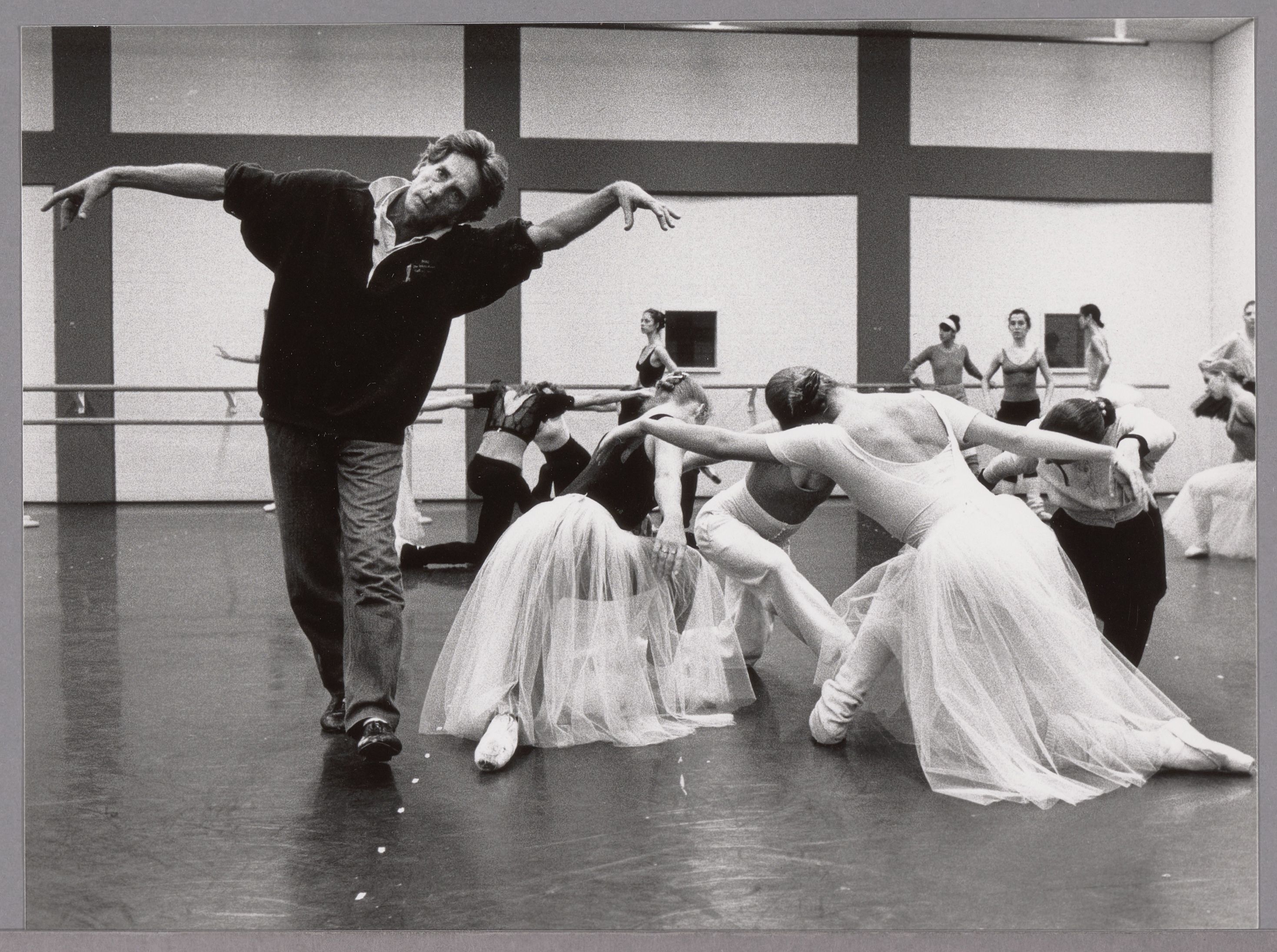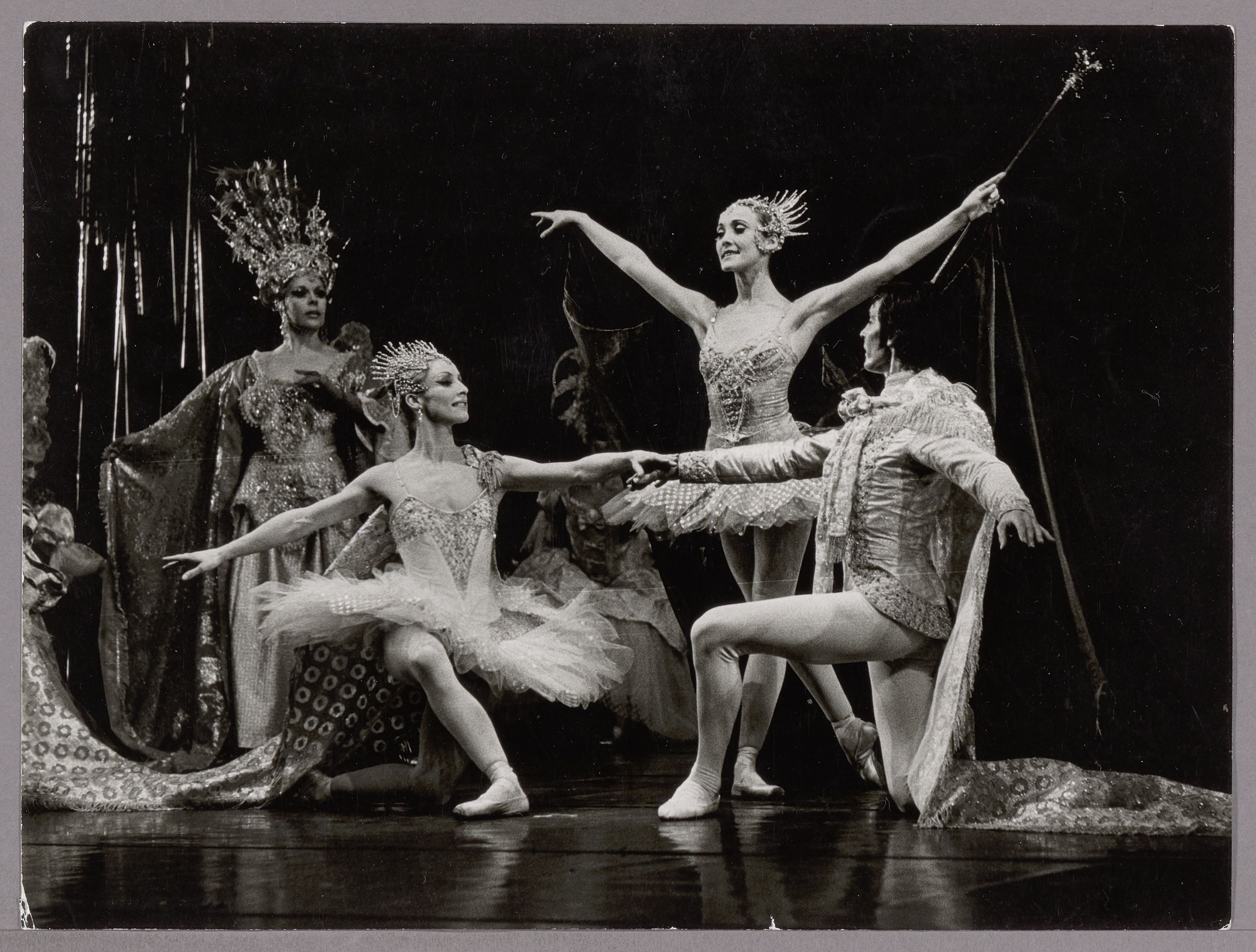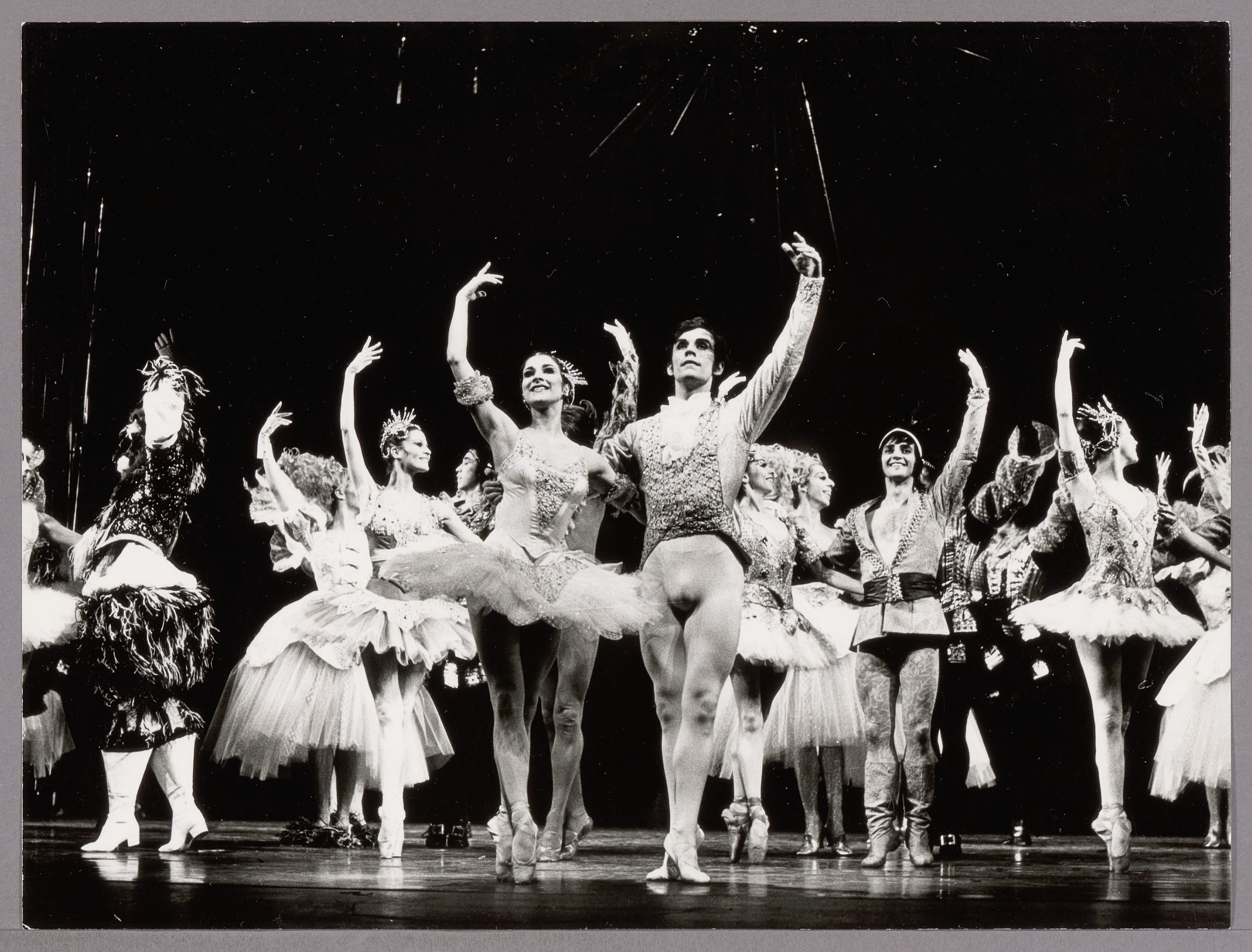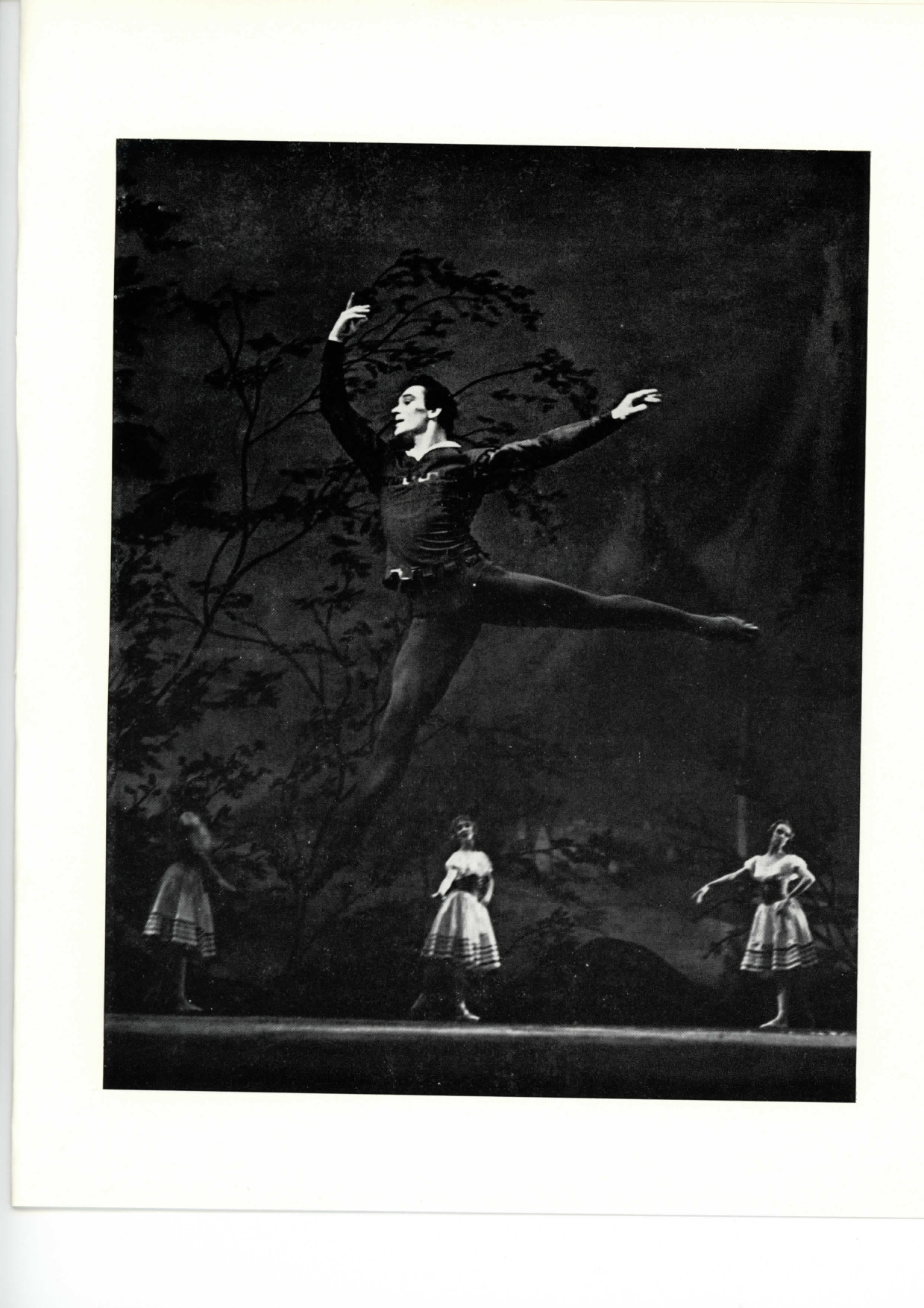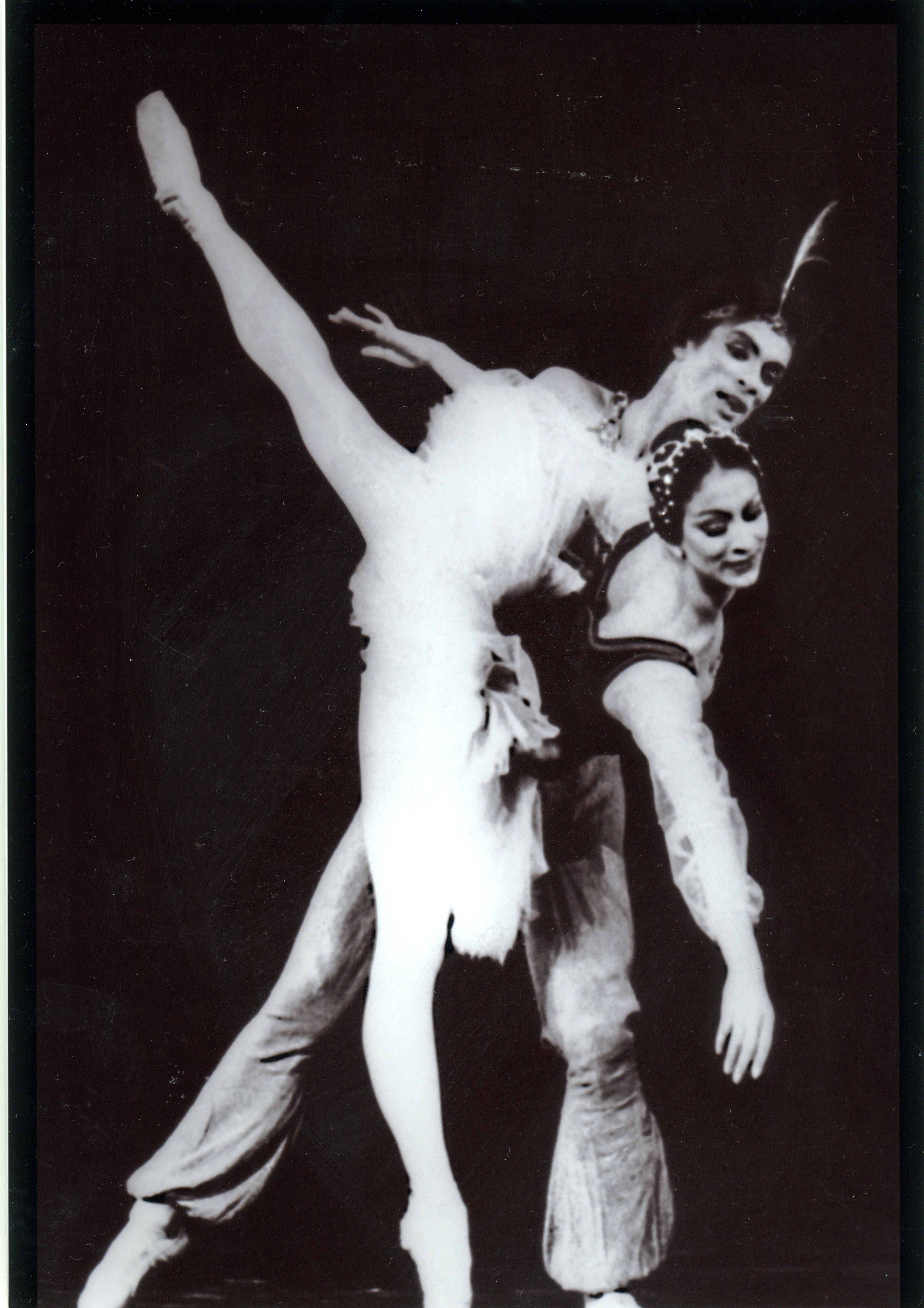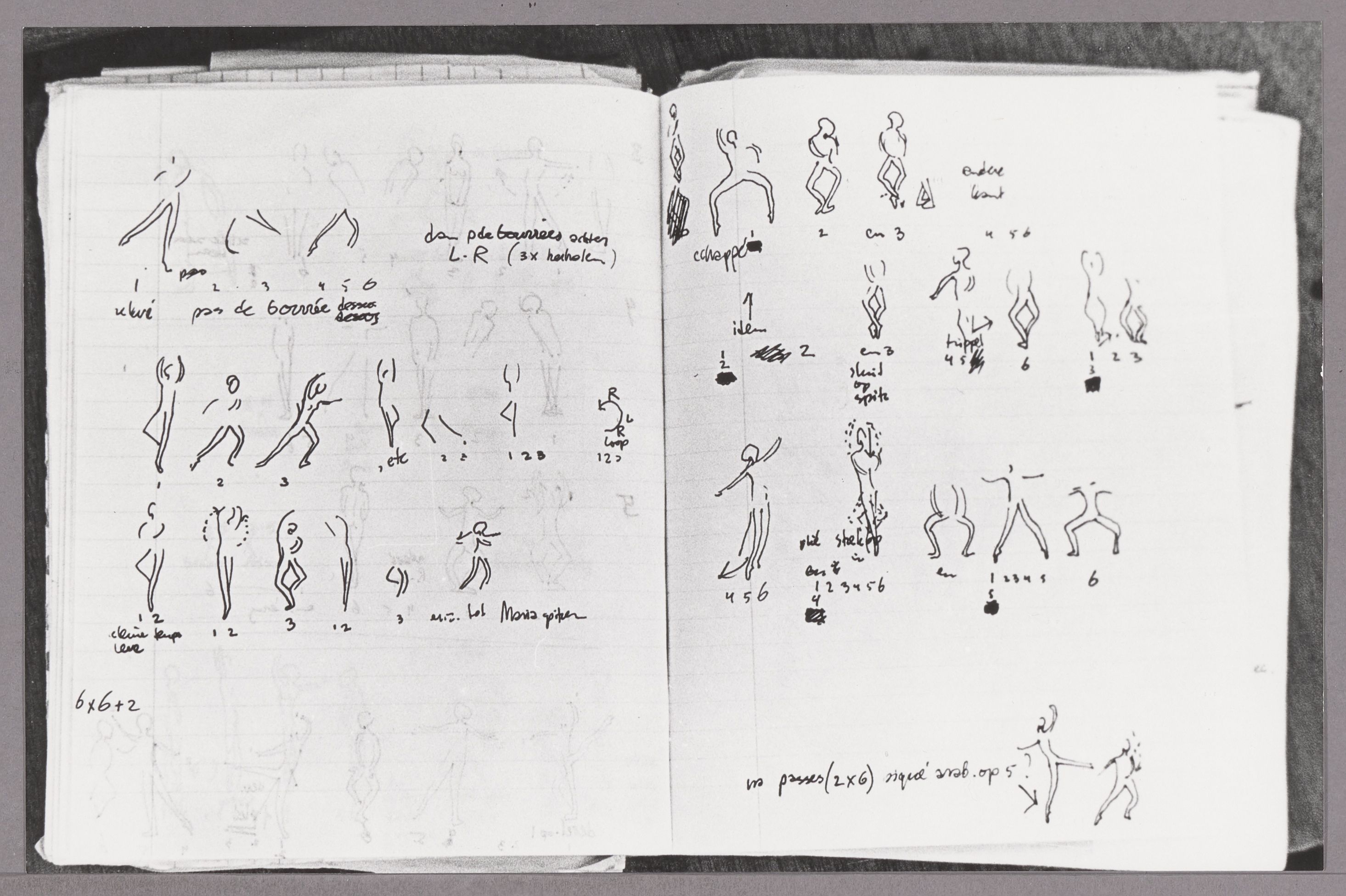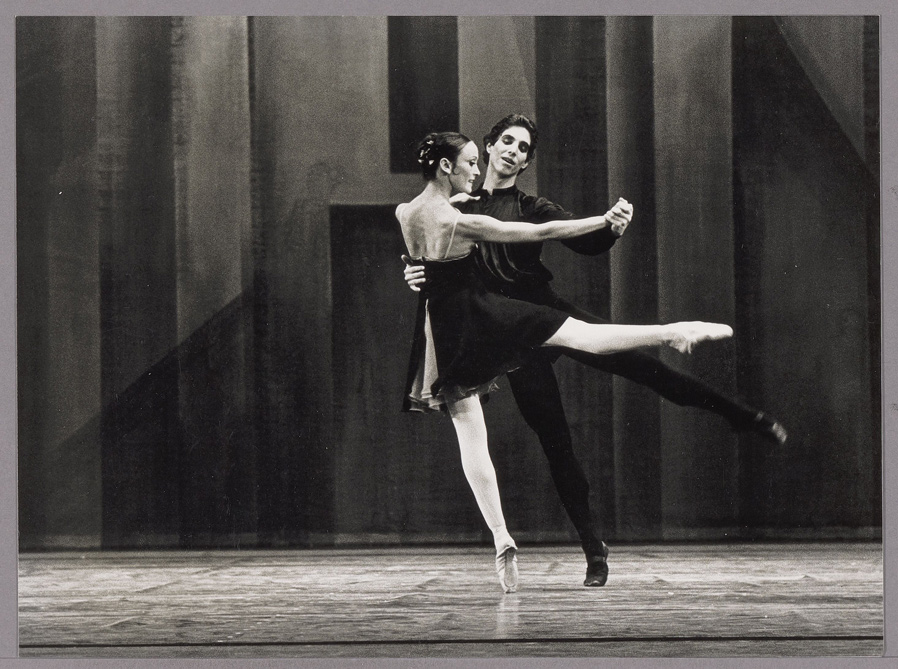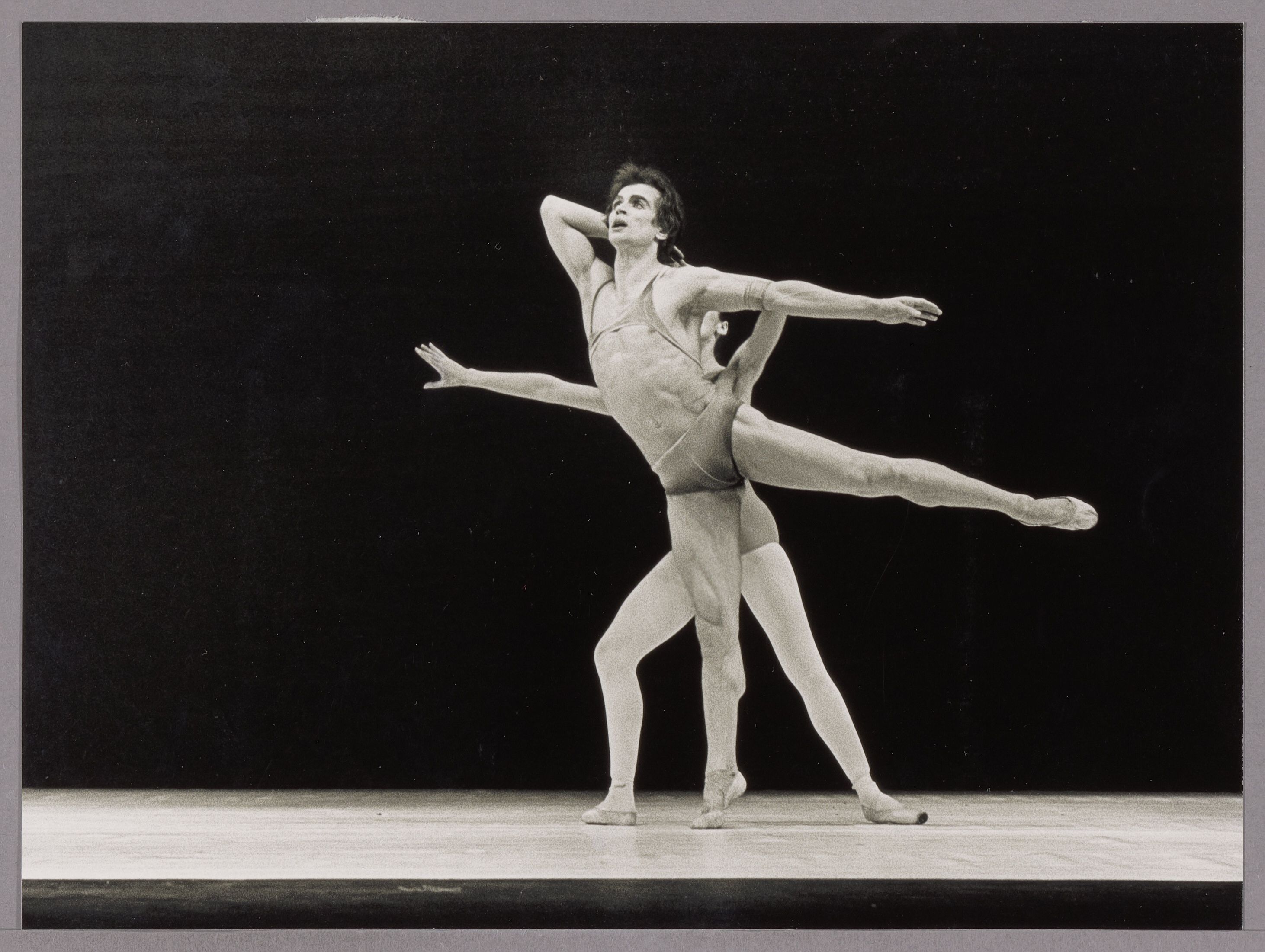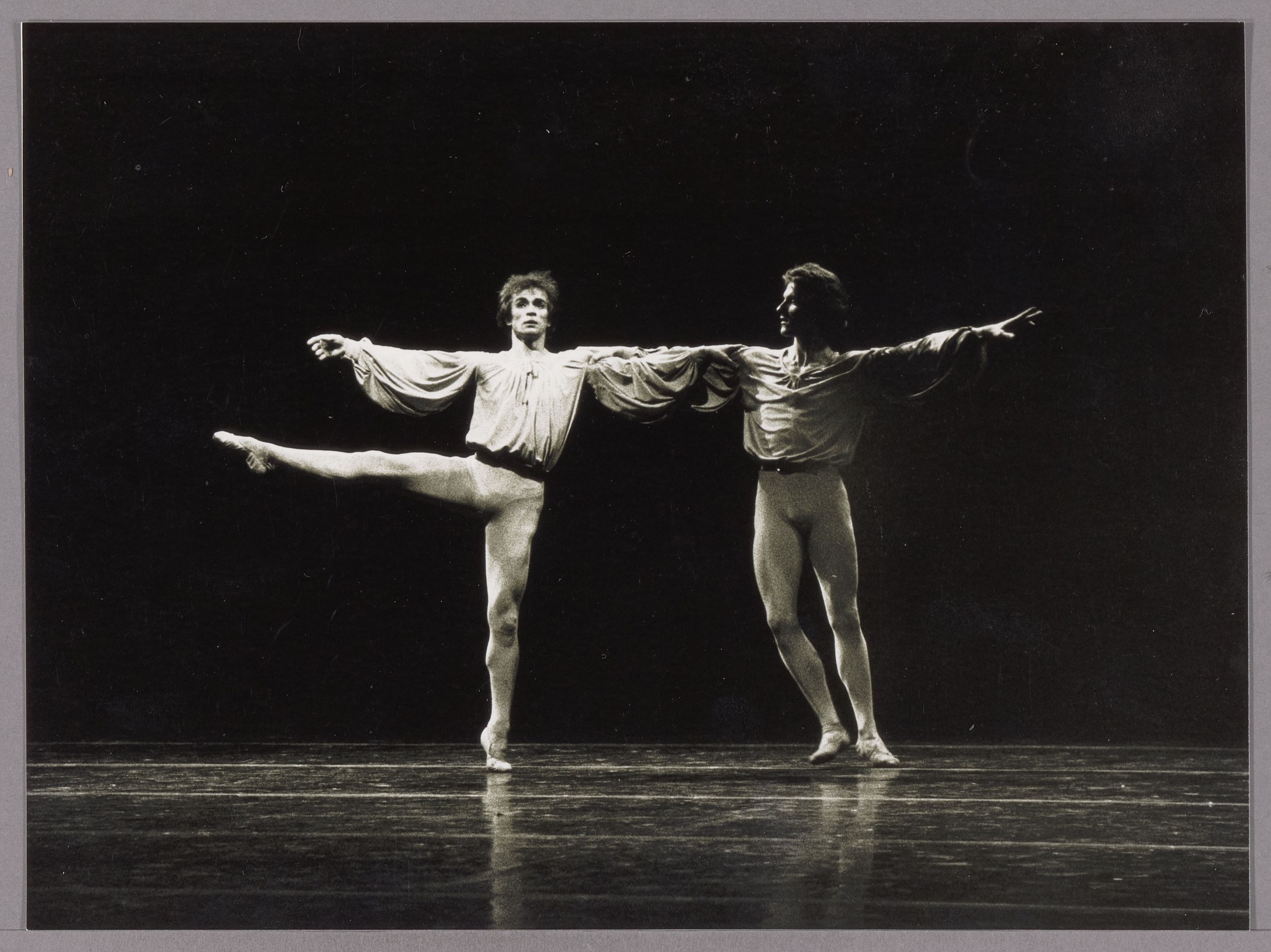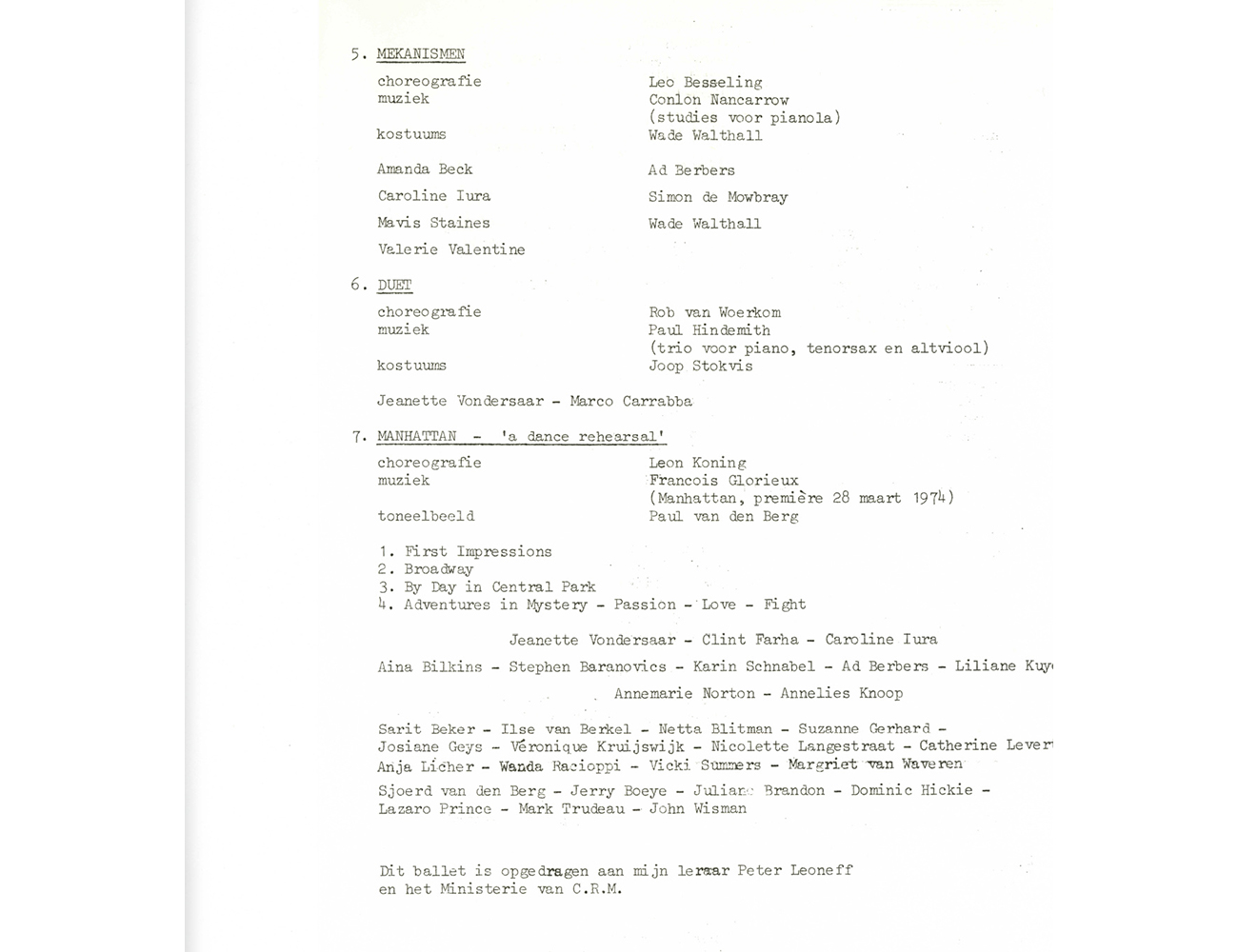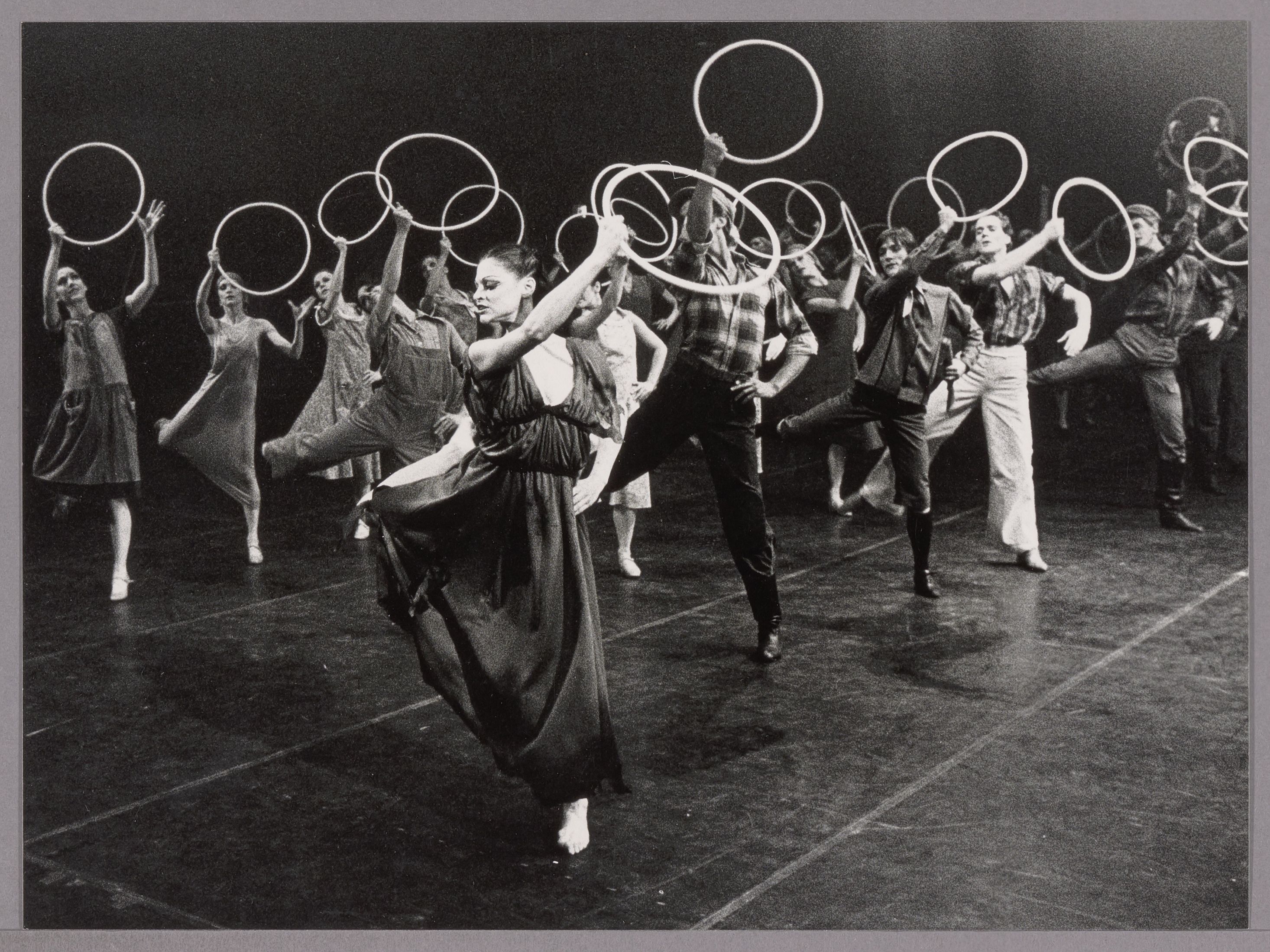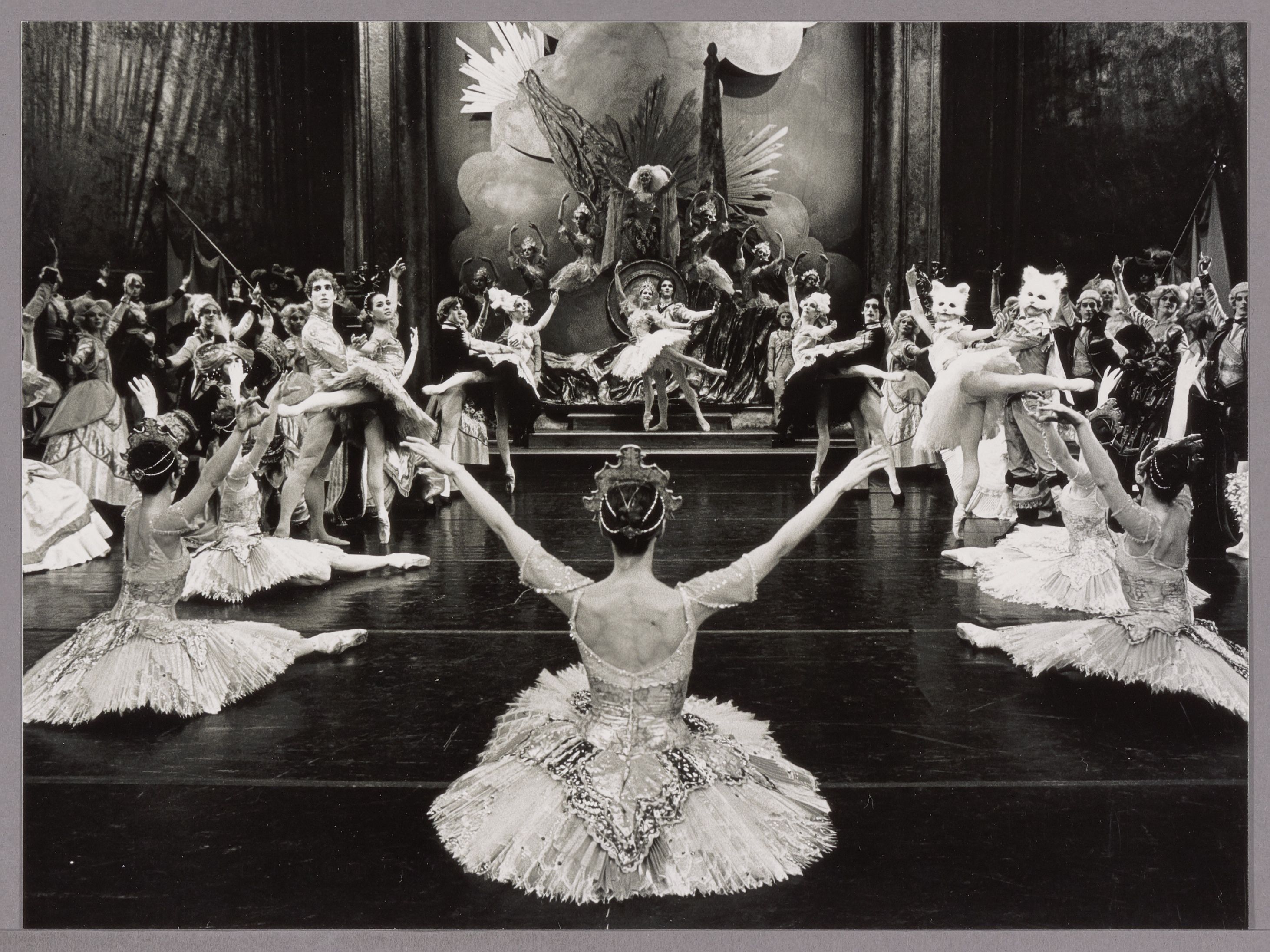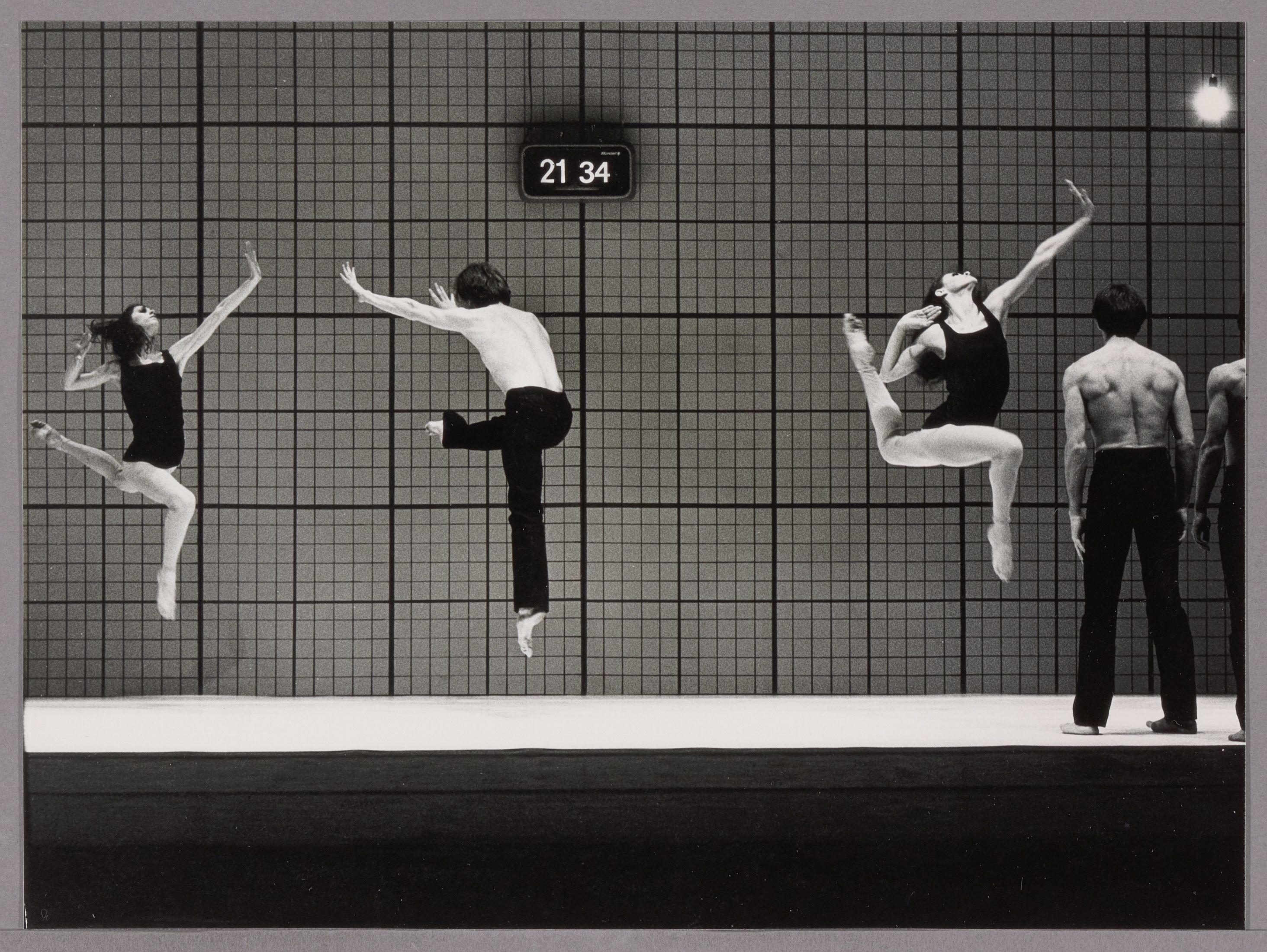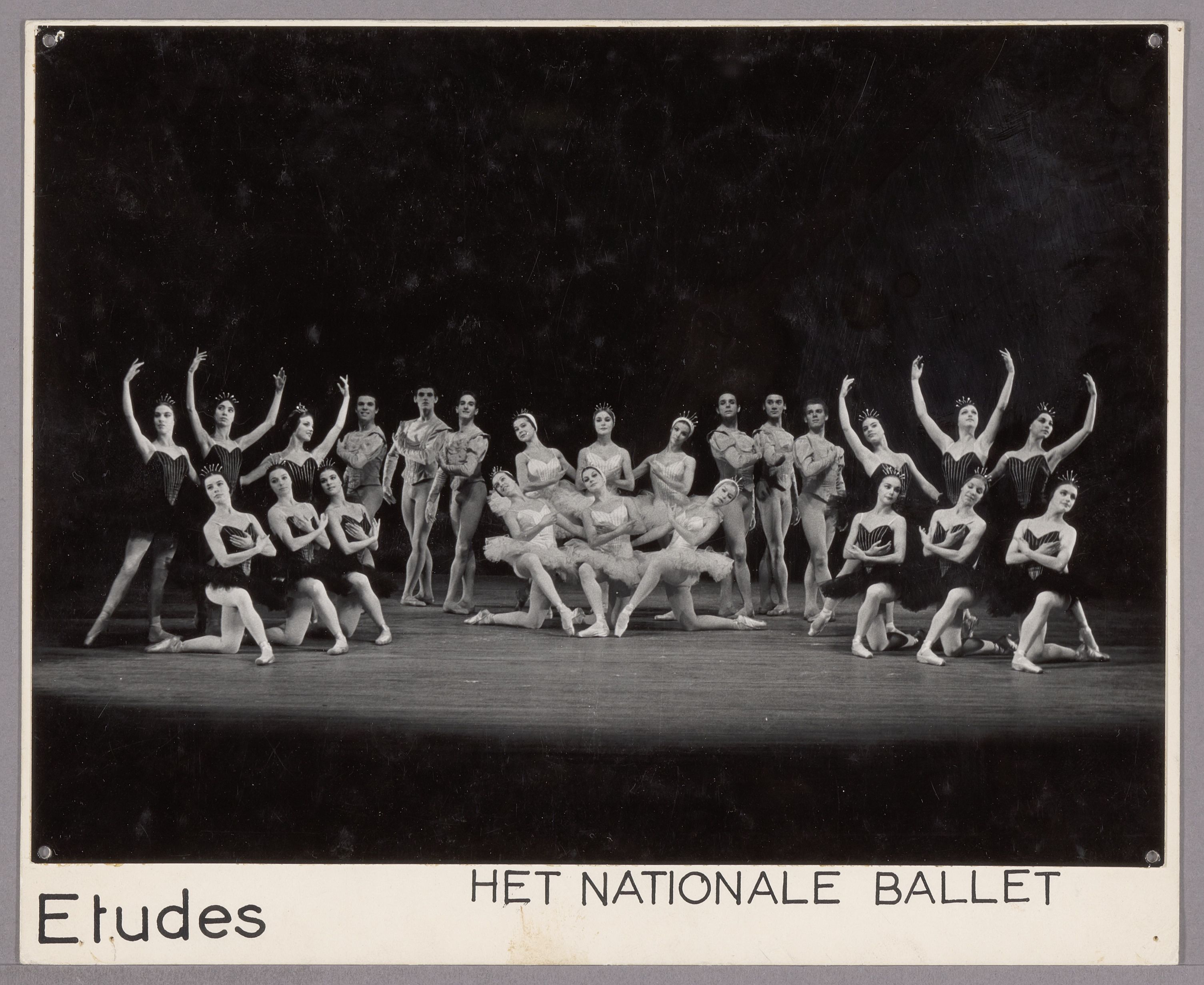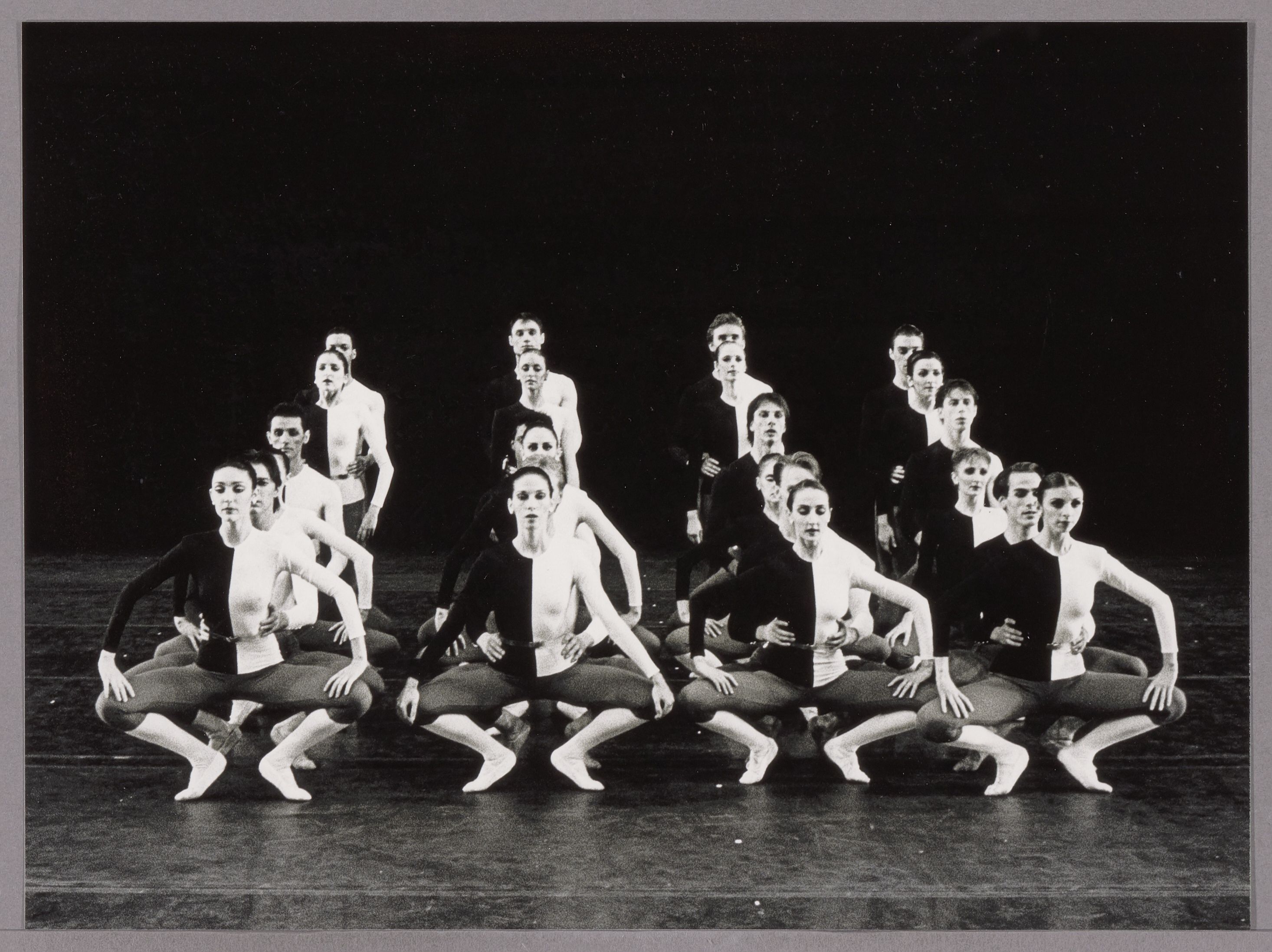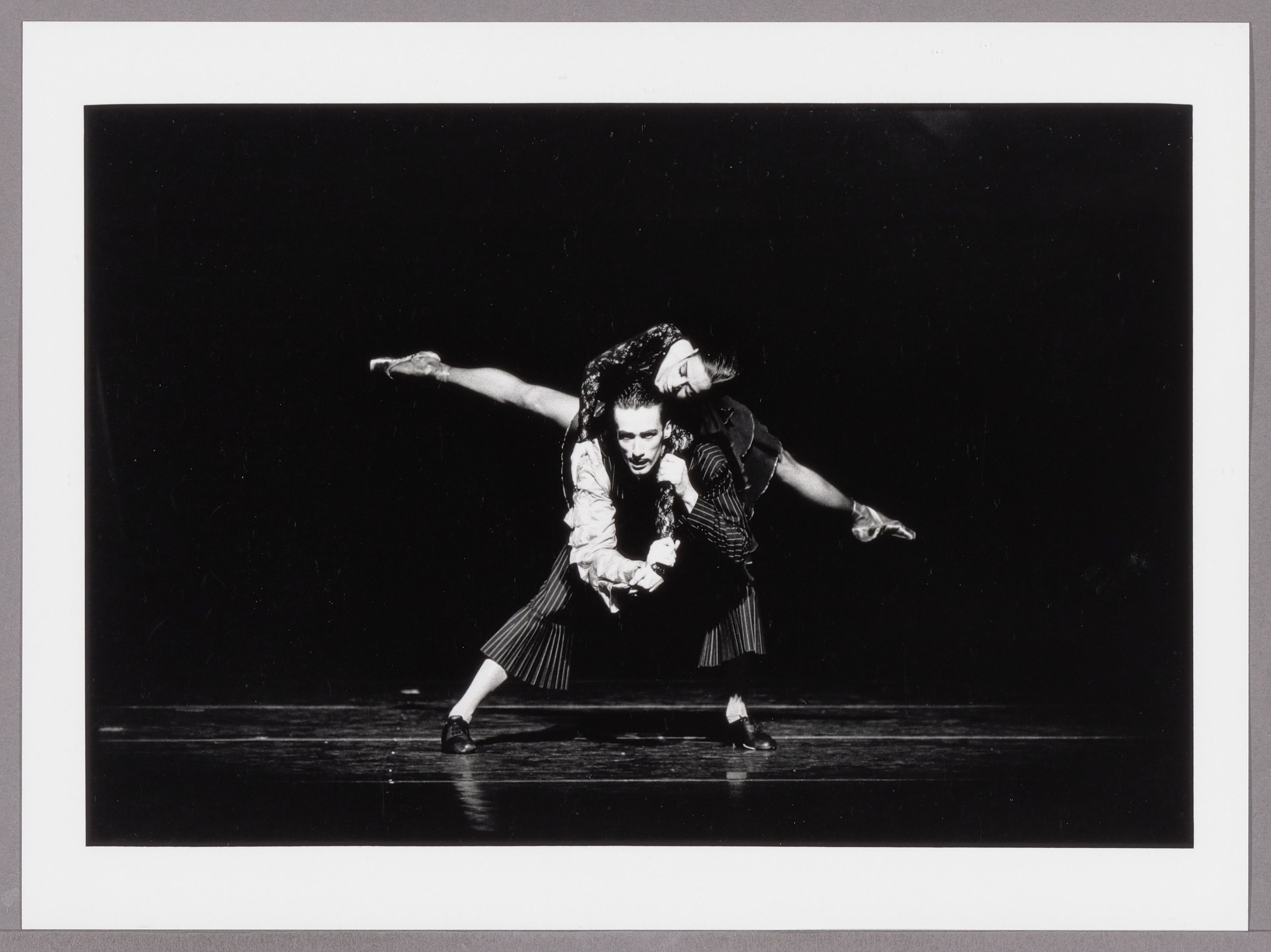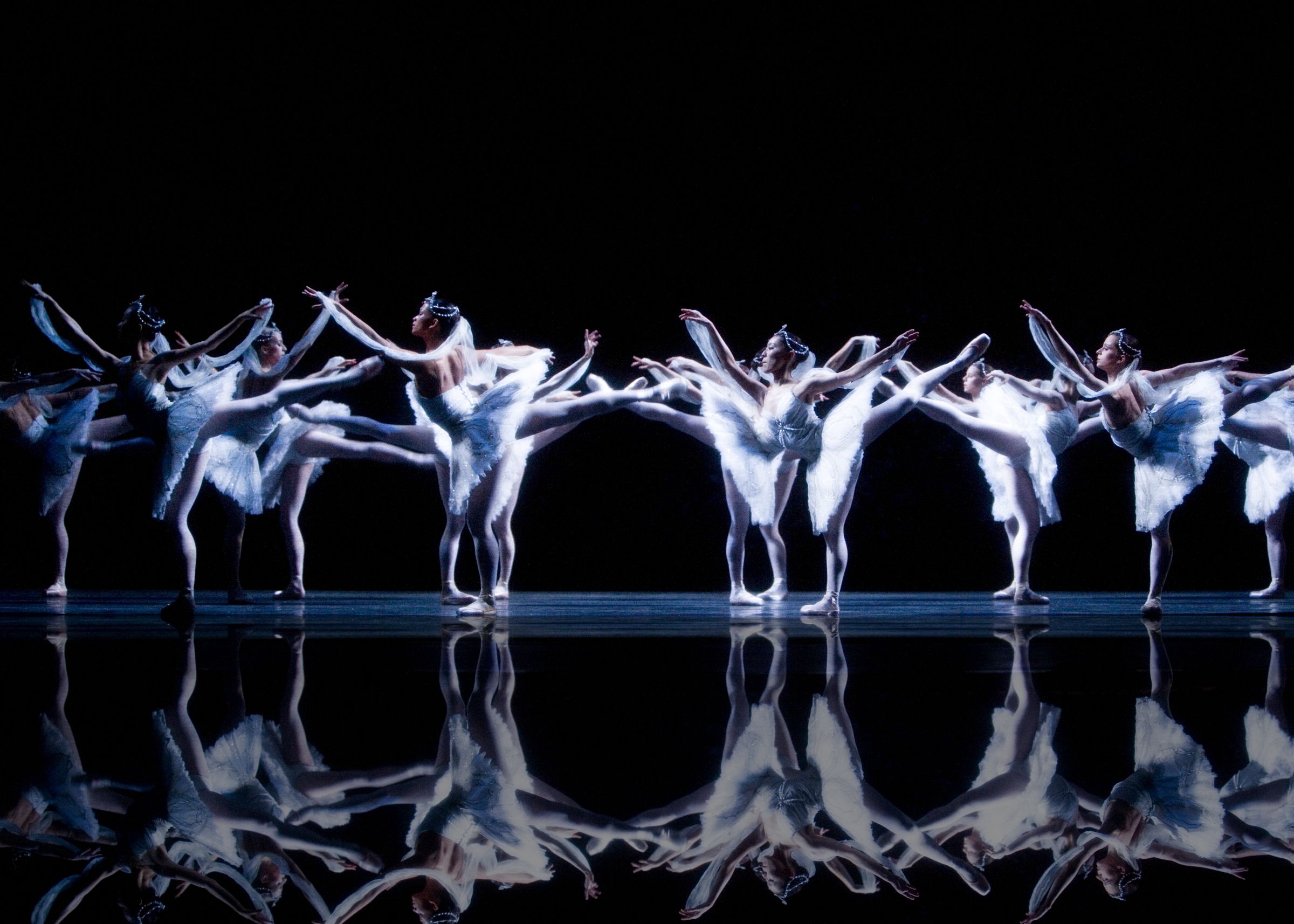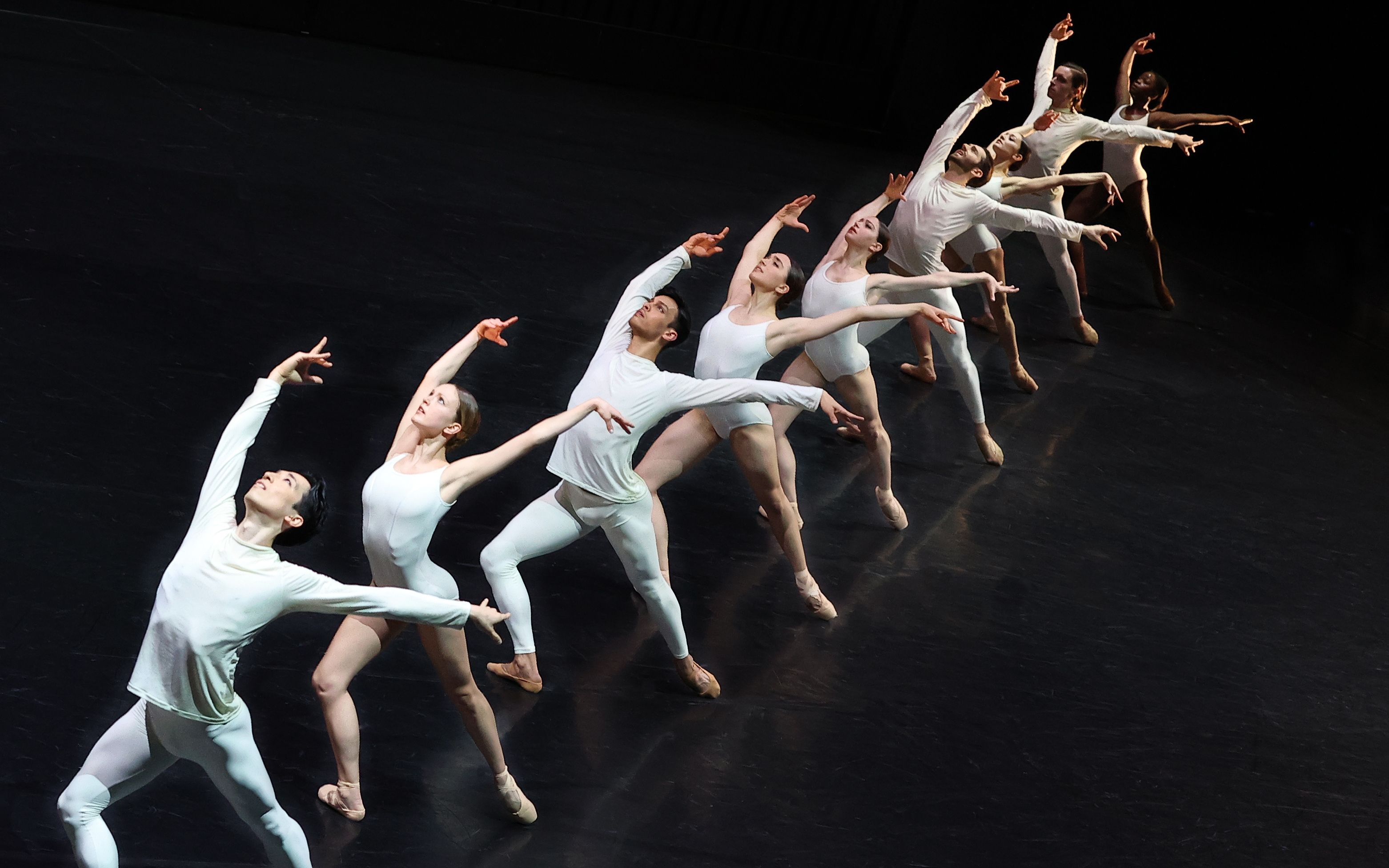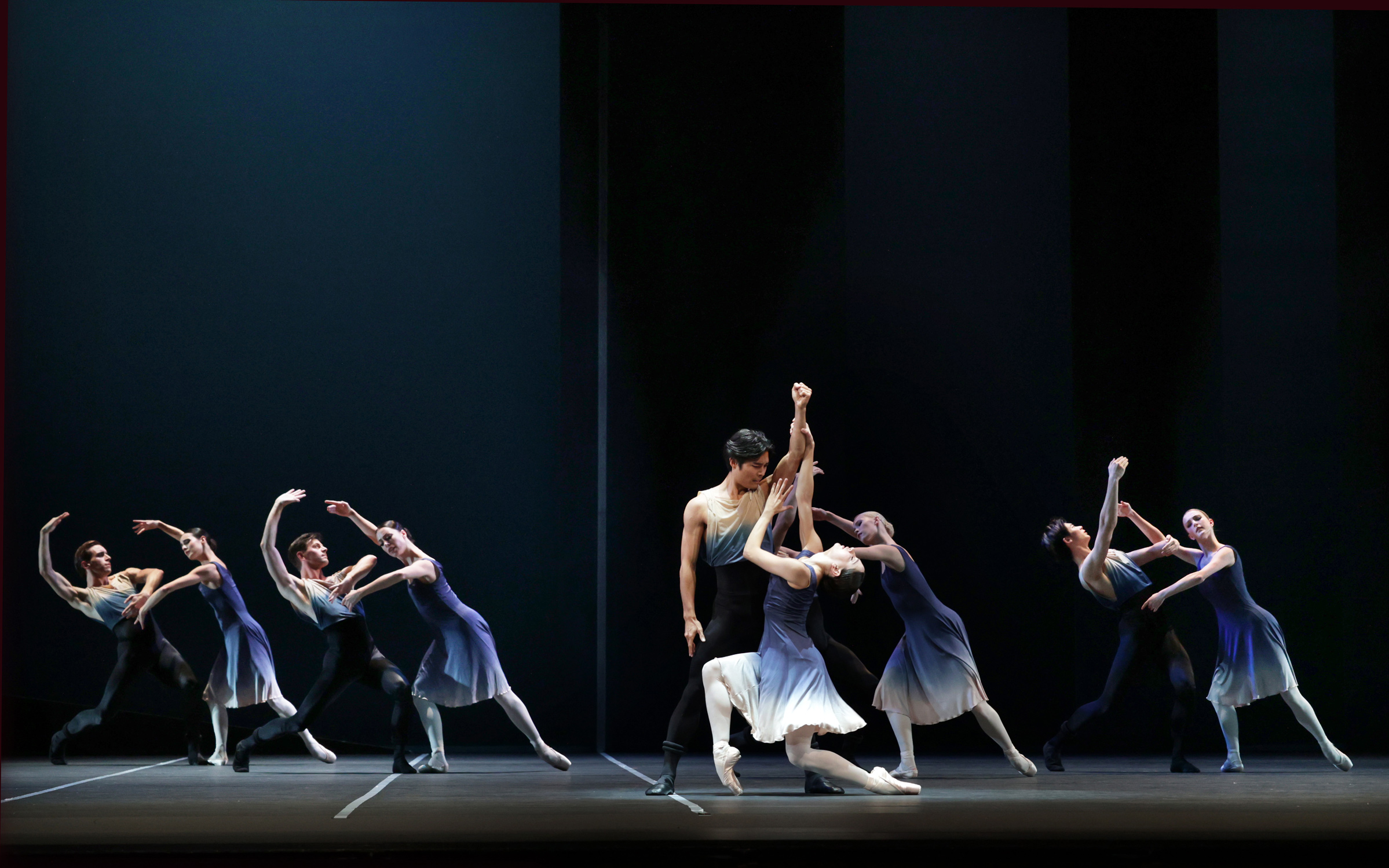
The history of Dutch National Ballet
Explore the rich history of Dutch National Ballet through this timeline, showcasing highlights from its repertoire and tracing the company’s development since its founding in 1961. Immerse yourself in captivating stories and enjoy a wealth of rarely-seen archival images.
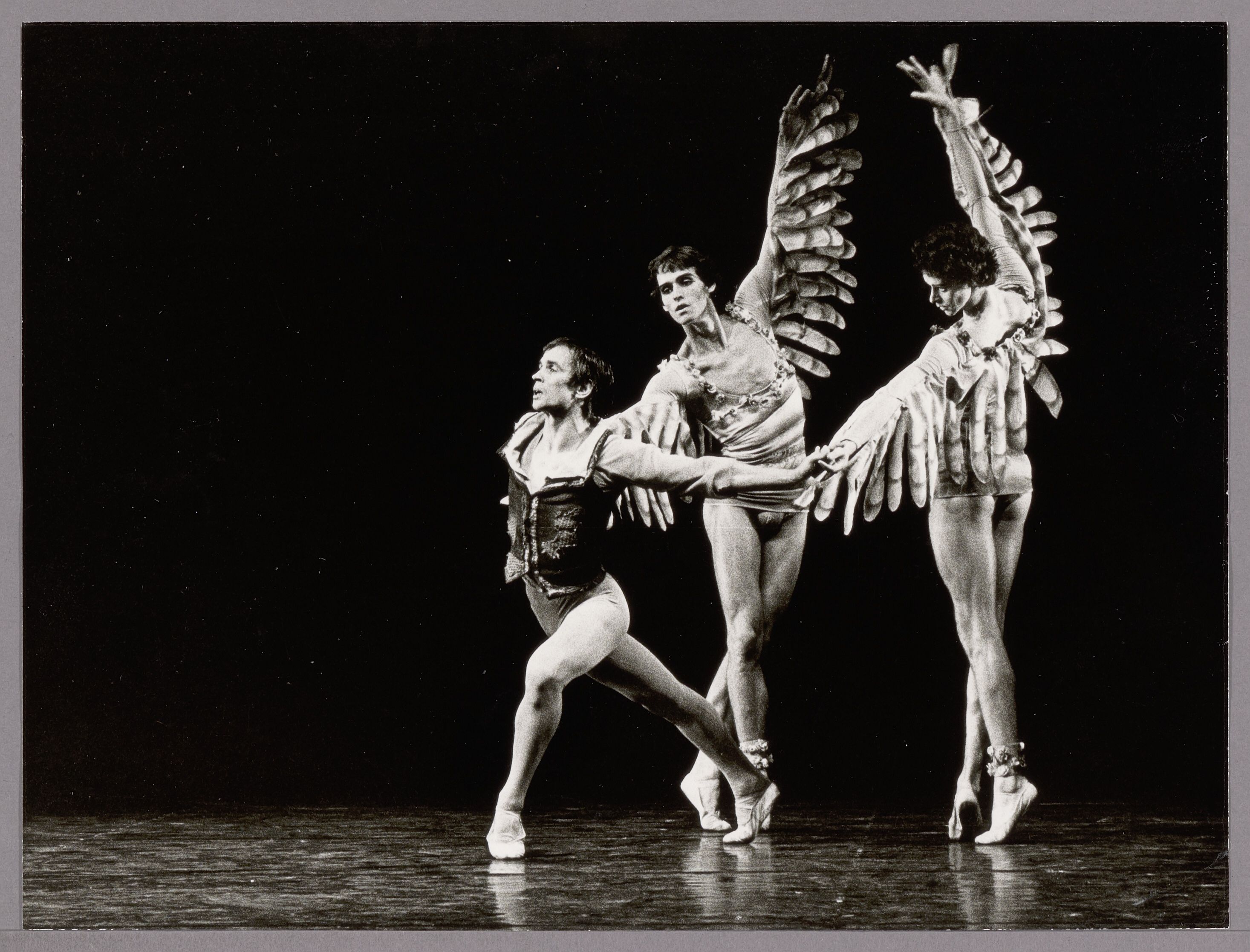
The 70s
- 89 New Productions
- 58 World Premieres
71 / 72
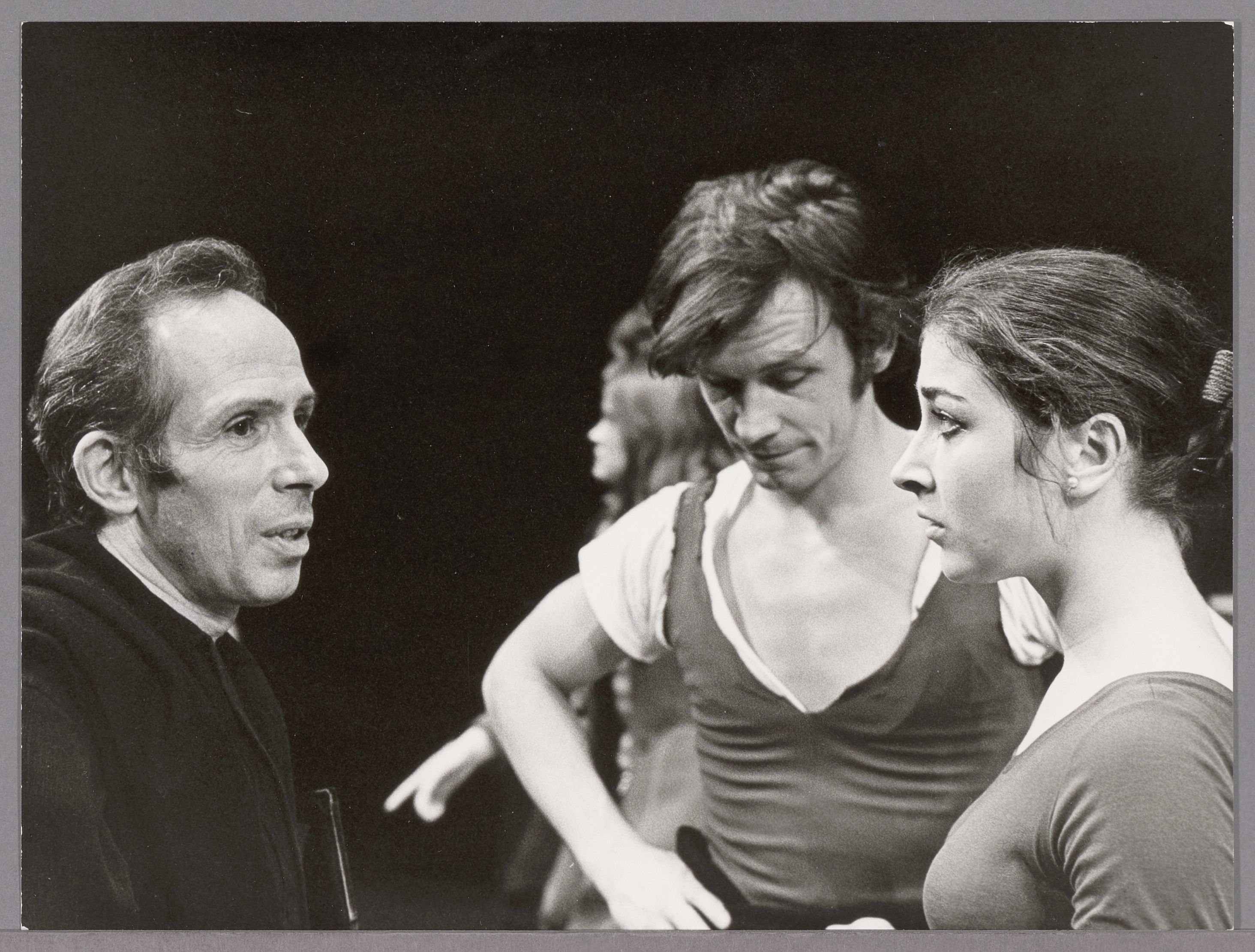
Van Dantzig sole artistic director
Following the departure of Benjamin Harkarvy, Rudi van Dantzig agrees to become sole artistic director. He holds this position for 20 years, until 1991.
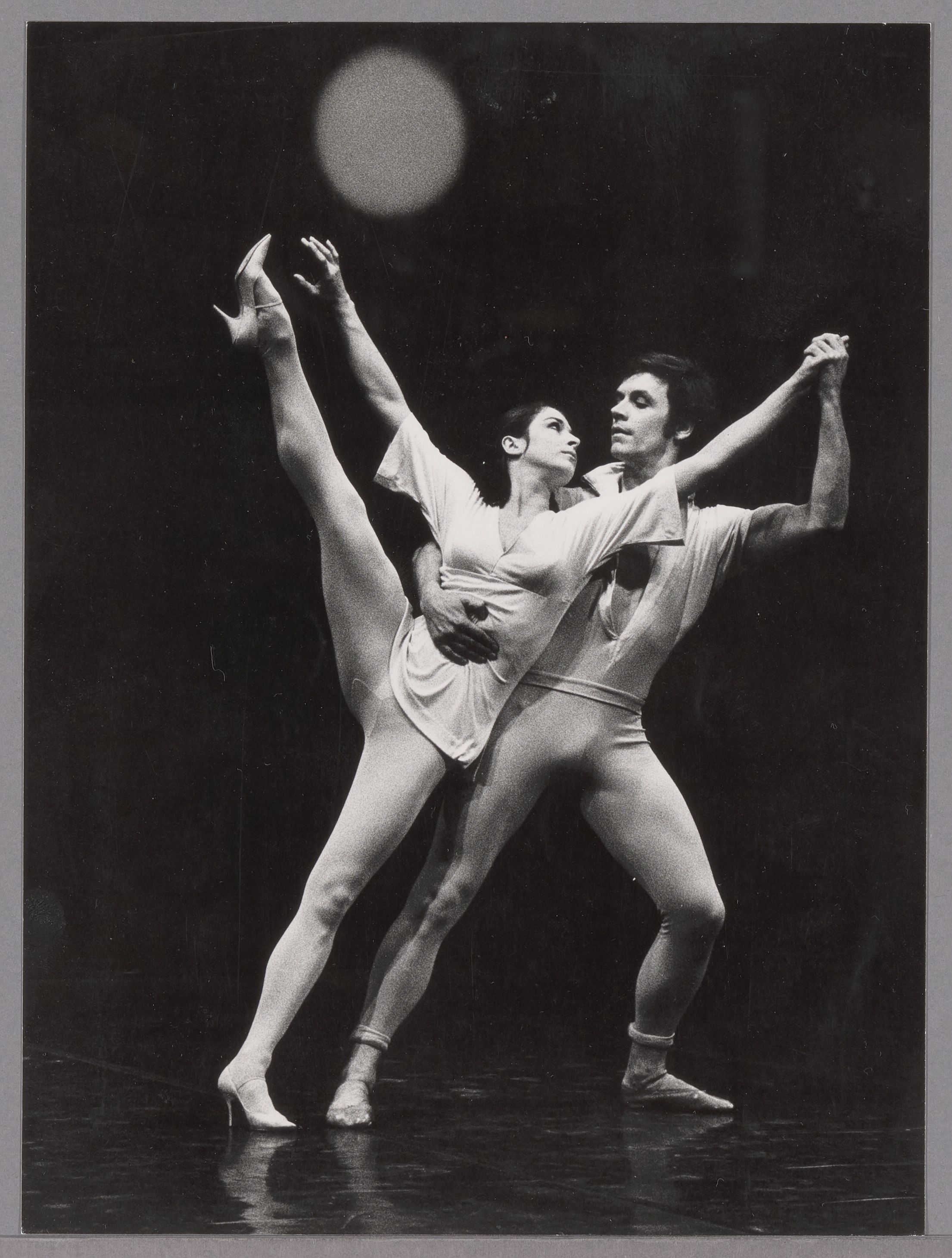
First Van Manens
In October 1971, at the request of Alexandra Radius and Han Ebbelaar, the company dances its first work by Hans van Manen: the duet Vijf schetsen, created for the couple in 1966. It is followed eight months later by Van Manen’s first creation for the company, Twilight, which gains international success for Radius and Ebbelaar – and many generations of principal dancers after them. Van Manen already has more than 35 ballets to his name, mostly made for Nederlands Dans Theater. Even before the creation of his third ballet, Feestgericht, he had already received the State Prize for Choreography.
The first tour of the Soviet Union
As part of a cultural treaty with the Soviet Union concluded in 1971, Dutch National Ballet gives its first performances in Moscow, Leningrad and Riga. The total of 19 performances draw audiences of 42,500 – an unprecedently high figure at the time.
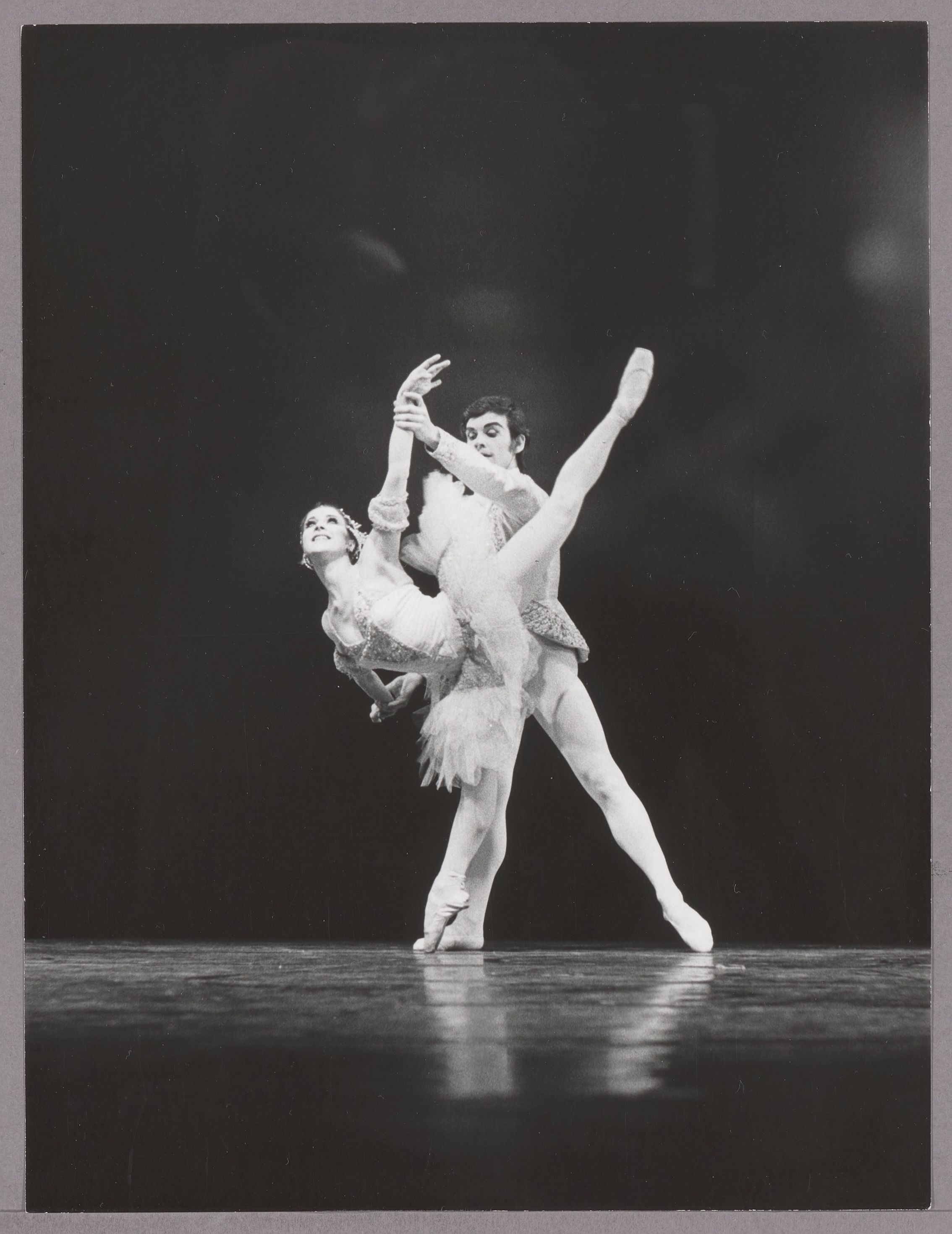
New Sleeping Beauty
Following the 1968 version of The Sleeping Beauty by Conrad Drzewiecki, the company presents a second production of The Sleeping Beauty, rehearsed by ballet master Roland Casenave, who based it on the version created in 1960 by Bronislava Nijinska and Robert Helpmann for the legendary Grand Ballet du Marquis de Cuevas.
72 / 73

Guest stars from the Bolshoi
Guest artists Ekaterina Maximova and Vladimir Vasiliev, star dancers with the famous Bolshoi Ballet in Moscow, dance the main roles in a few performances of Giselle. “The Russians excel at bringing the fairy tale to life”, wrote de Volkskrant.
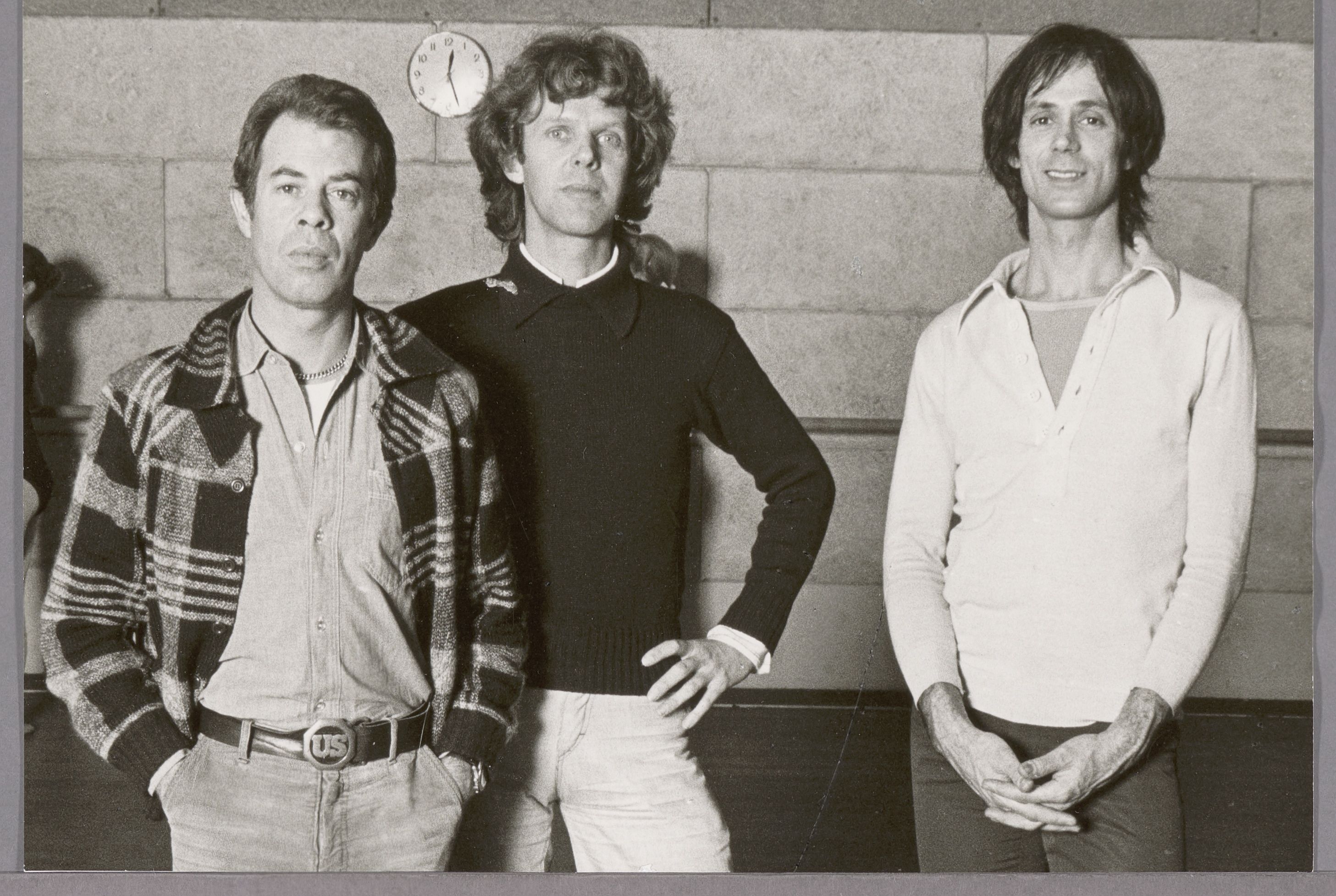
Van Dantzig, Van Manen, Van Schayk
With the new works Hier rust een zomerdag and Ramifications (both by Van Dantzig), Daphnis and Chloé (Van Manen) and The Art of Saying Bye-Bye (Van Schayk, originally created for Scottish Theatre Ballet), the 'Three Van's' – an honorary title they would later be given by the foreign press – make a big mark on the repertoire of Dutch National Ballet.
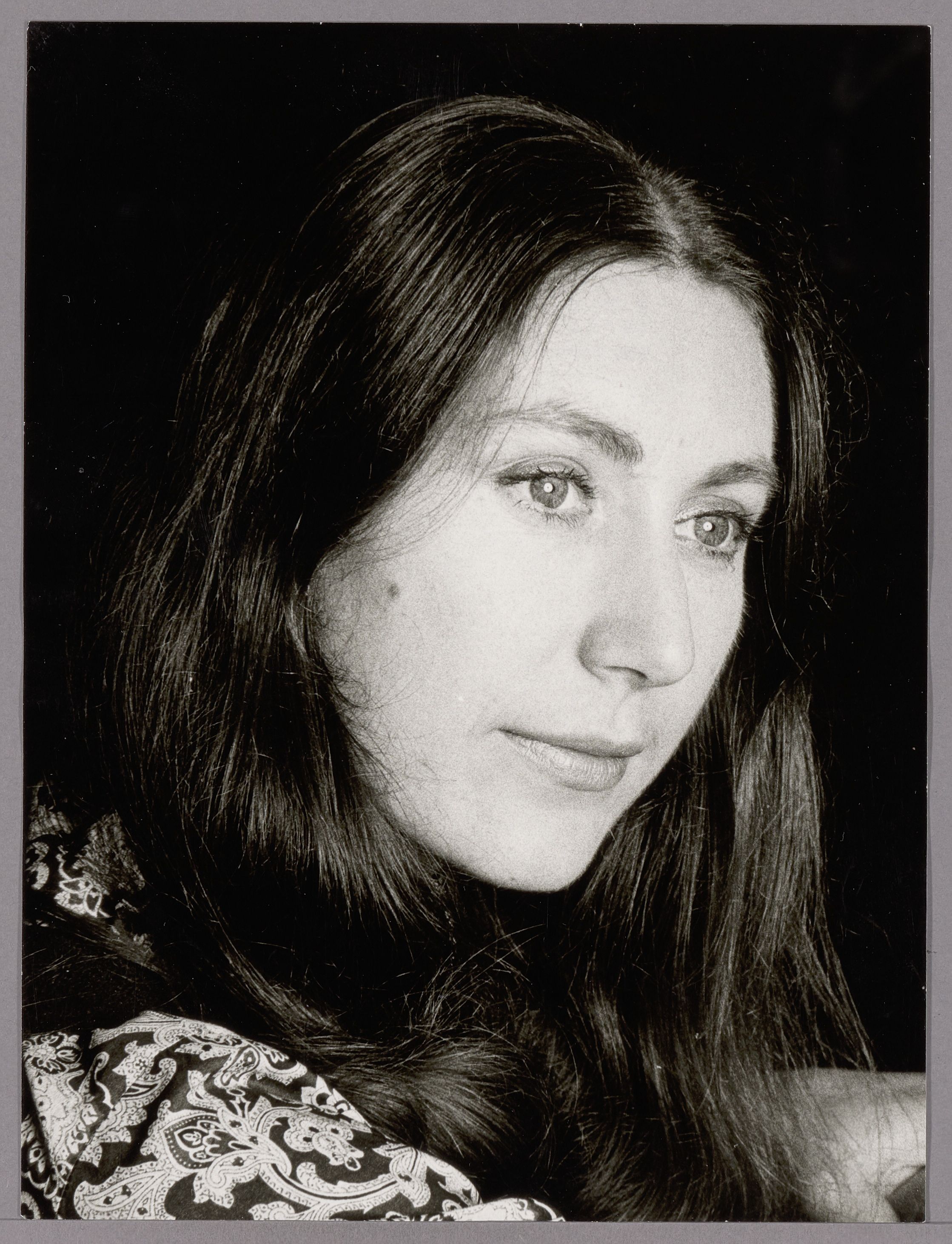
Choreologist
For the first time, the company appoints a choreologist, Wendy Vincent Smith, who writes down the ballets using Benesh notation, a system developed especially for dance.
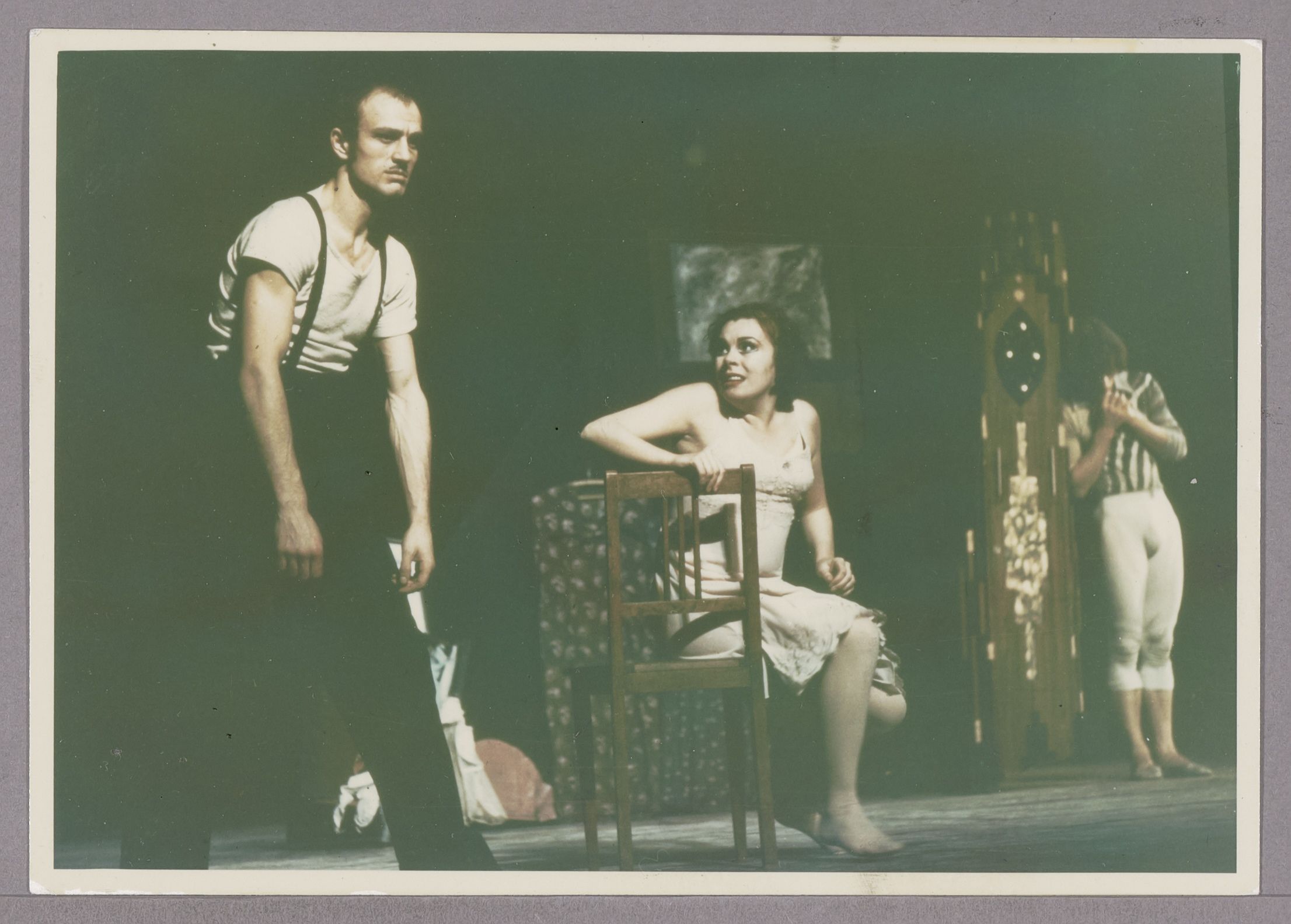
Training course for boys
To address the shortage of talented male dancers in the Netherlands, Dutch National Ballet starts its own training course for boys aged 15 to 19, led by ballet master Ivan Kramar. Unfortunately, the course ends after just one season, due to lack of interest.
73 / 74
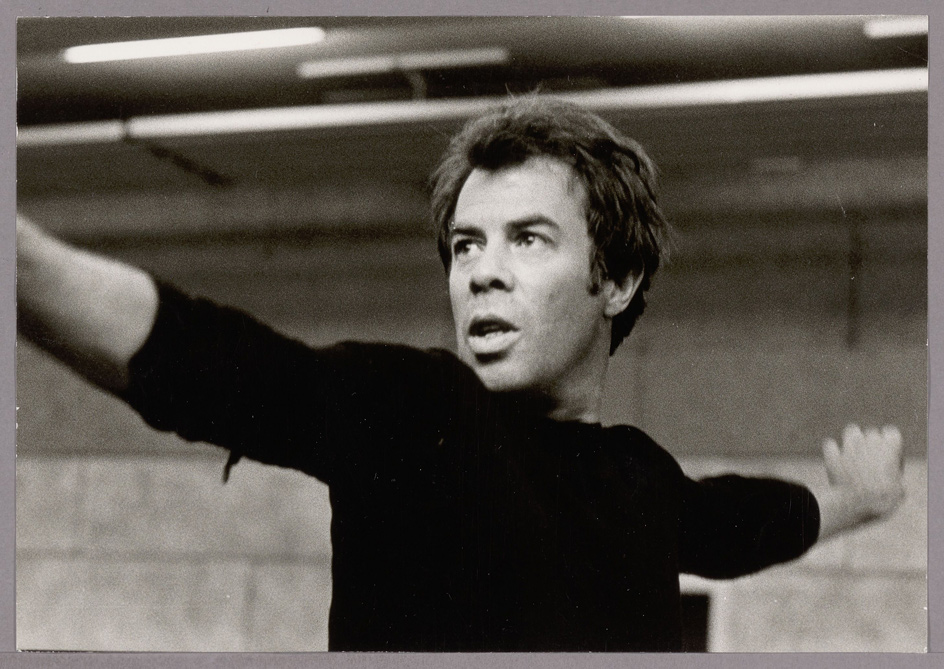
Hans van Manen resident choreographer
At the start of this season, Hans van Manen becomes Dutch National Ballet’s second resident choreographer, alongside artistic director Rudi van Dantzig.
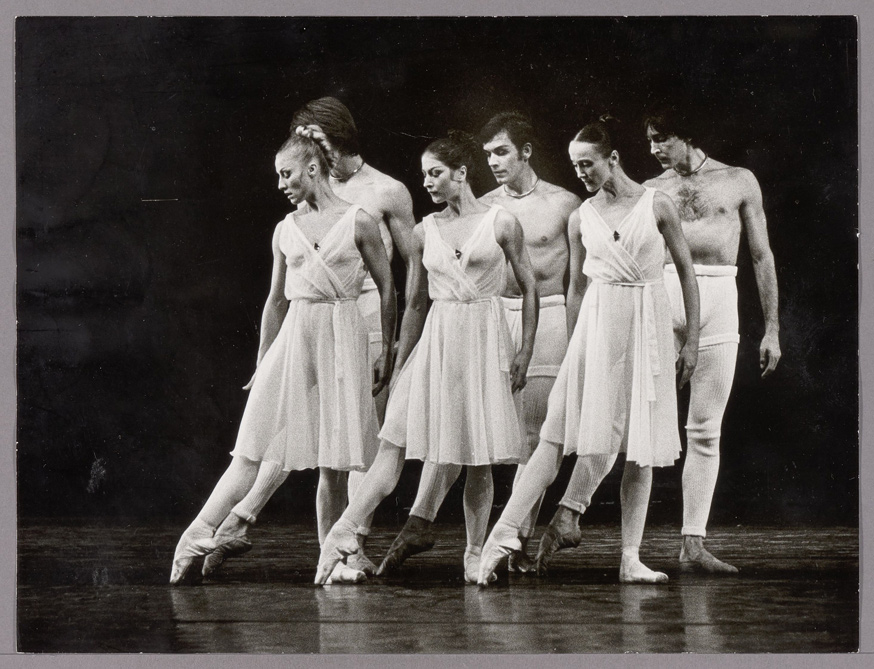
Adagio Hammerklavier
The first work Van Manen creates as a resident choreographer, Adagio Hammerklavier, is an absolute hit. On tour to London, the Beethoven ballet is also a triumph for the three couples performing it: Monique Sand and Henny Jurriëns, Sonja Marchiolli and Francis Sinceretti, and Alexandra Radius and Han Ebbelaar.
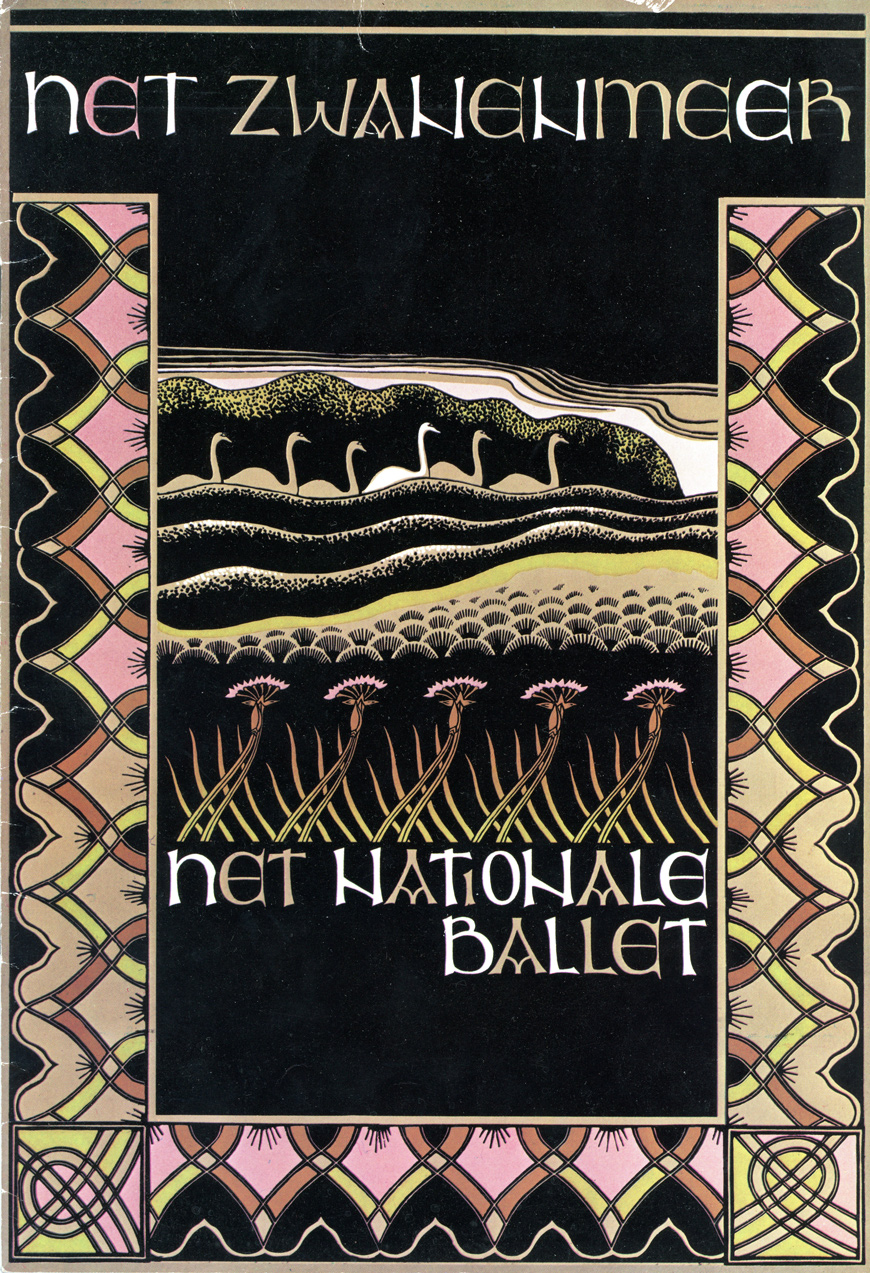
Second Swan Lake
The company presents its second production of Swan Lake, this time in a version by the Croatian ballet master Zarko Prebil. Unlike the production by Igor Belski (1965), Prebil’s version reinstates the original unhappy ending: Odette and her beloved Prince Siegfried are drowned in the waves of the lake. The sets and costumes are designed by Toer van Schayk, as is also the case for the later version by Rudi van Dantzig (1988).
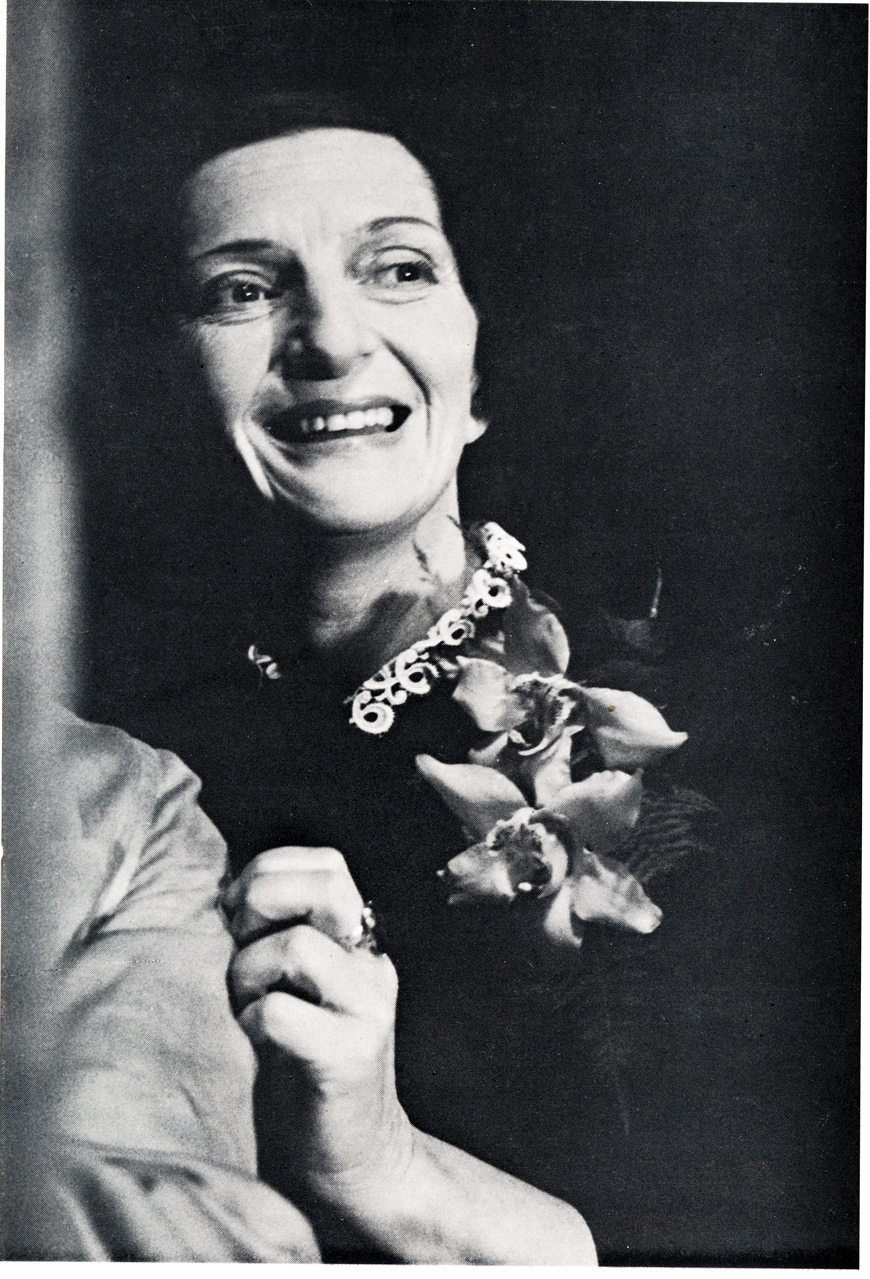
Death of Gaskell
On 9 July 1974, Sonia Gaskell dies in Paris, where she has lived since leaving Dutch National Ballet. Originally from Russia, Gaskell was crucially important to the development of ballet in the Netherlands after World War II, both in her role as a ballet teacher (of many dancers who later became famous) and in her role as founder and artistic director of Ballet Recital I, Ballet Recital II, Nederlands Ballet and Dutch National Ballet, successively.
74 / 75
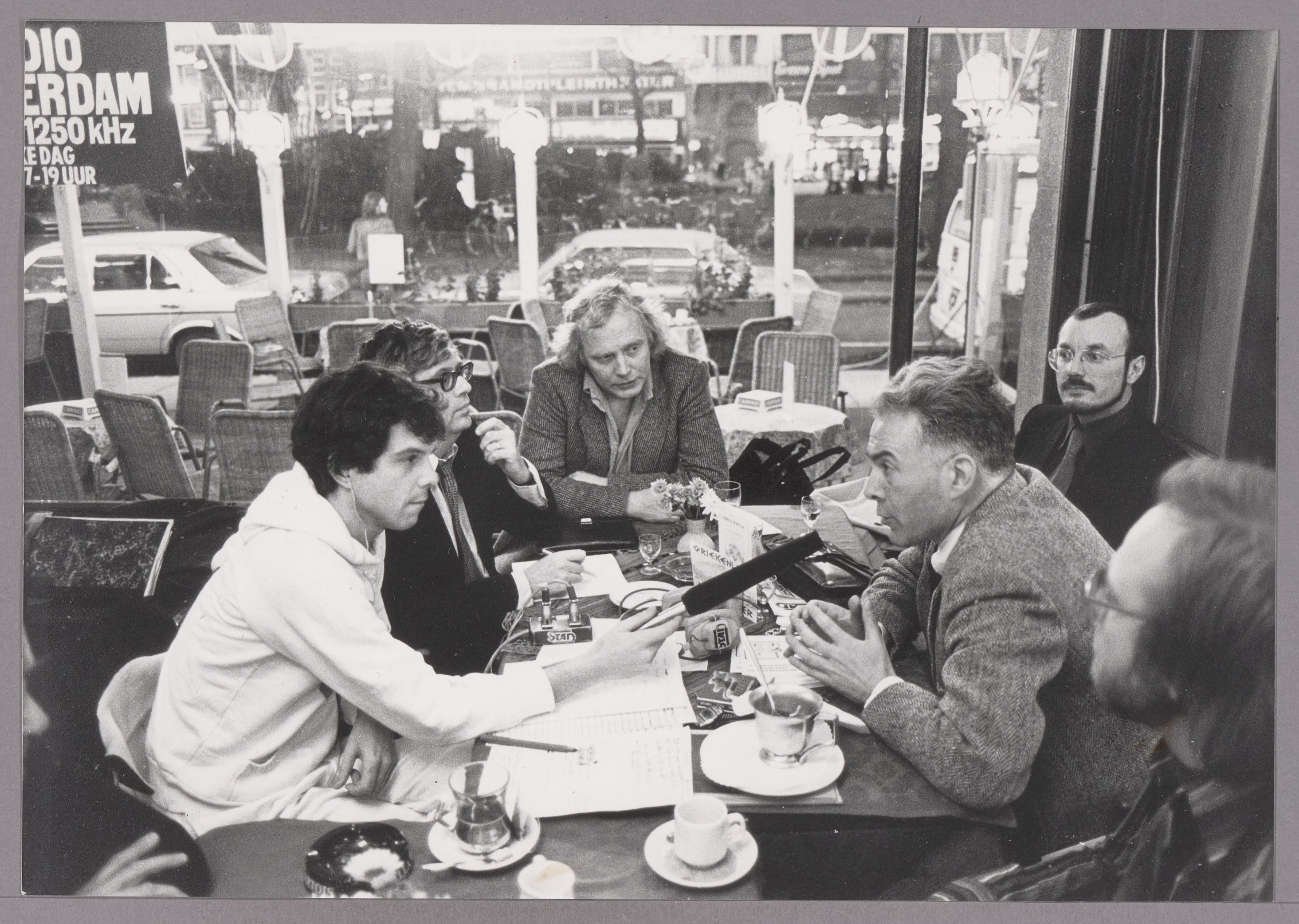
Pressing for a new theatre for opera and ballet
In a memo to its subsidisers, Dutch National Ballet urges the speeding up of the construction of a new theatre for opera and ballet. At the time, there are plans for a ‘music theatre’ on the site of the old RAI building at Ferdinand Bolstraat. It would be another 12 years before the opening of The Amsterdam Music Theatre (now Dutch National Opera & Ballet), at Waterlooplein.
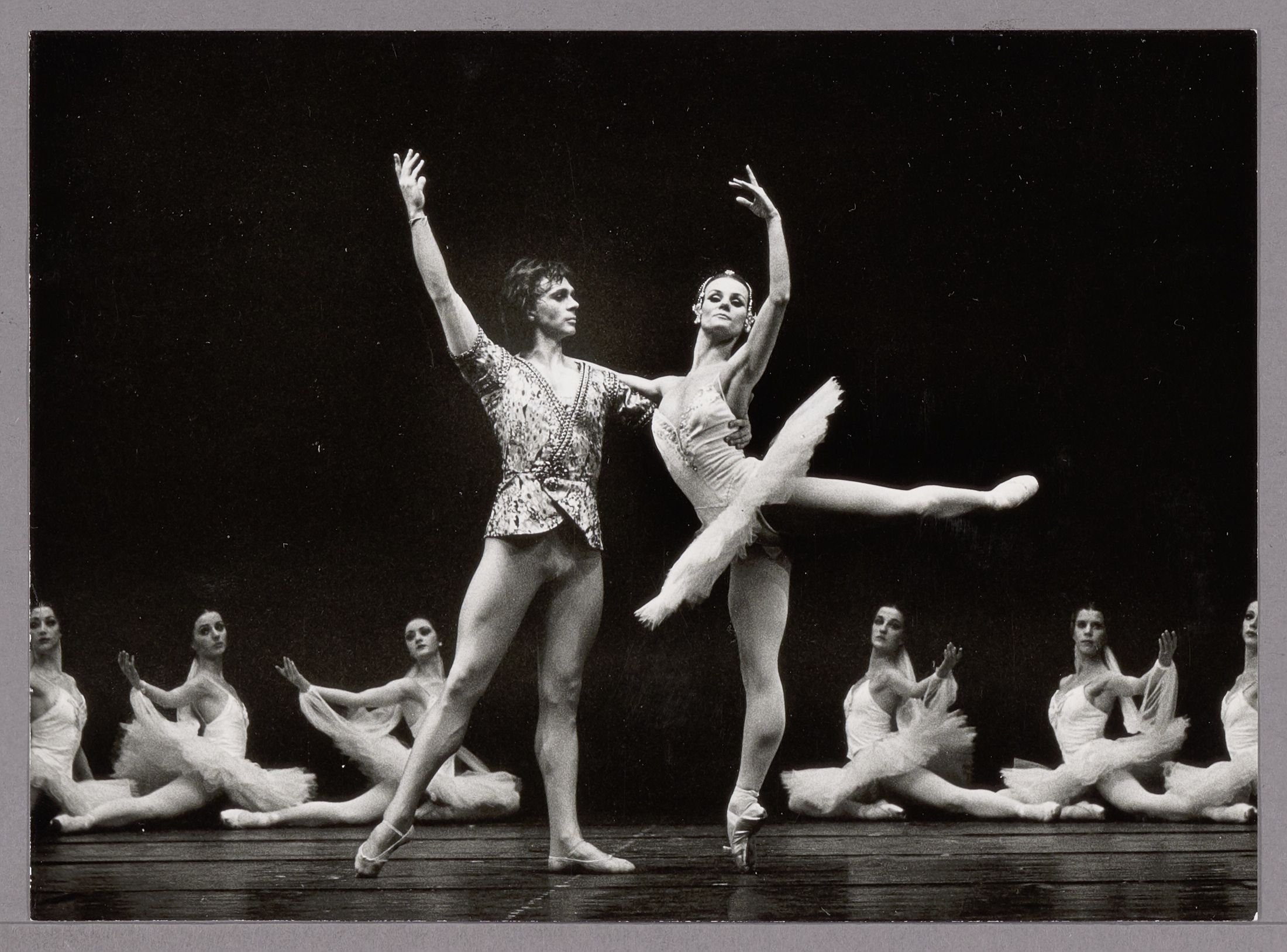
La Bayadère Act III
Following a previous version from the 1963/1964 season (by Elena Chikvaidze), Dutch National Ballet presents a second version of Act III of Marius Petipa's La Bayadère, this time rehearsed by Marina Shamsheva of the Kirov Ballet (now Mariinsky Ballet). The ballet is a personal triumph for principal dancer Maria Aradi, who dances the role of Nikiya at the premiere in February 1975. “Her interpretation has set an unprecedentedly high standard for the Netherlands”, writes the Volkskrant.
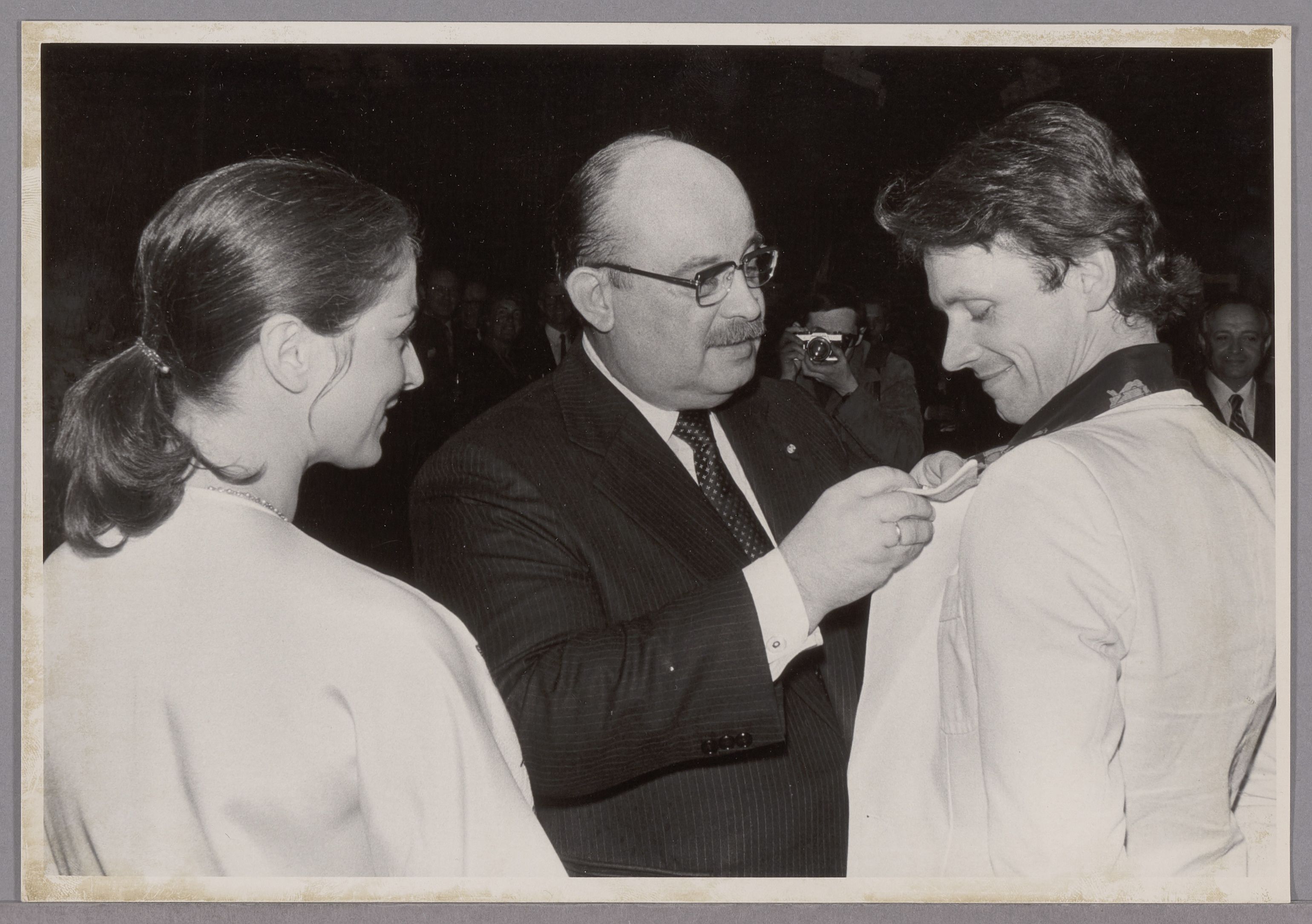
Honours
Principal dancers Alexandra Radius and Han Ebbelaar are appointed Knight of the Order of Orange-Nassau, on a tour to Canada (see below). Hans van Manen is awarded the Circle of Dutch Theatre Critics Prize.
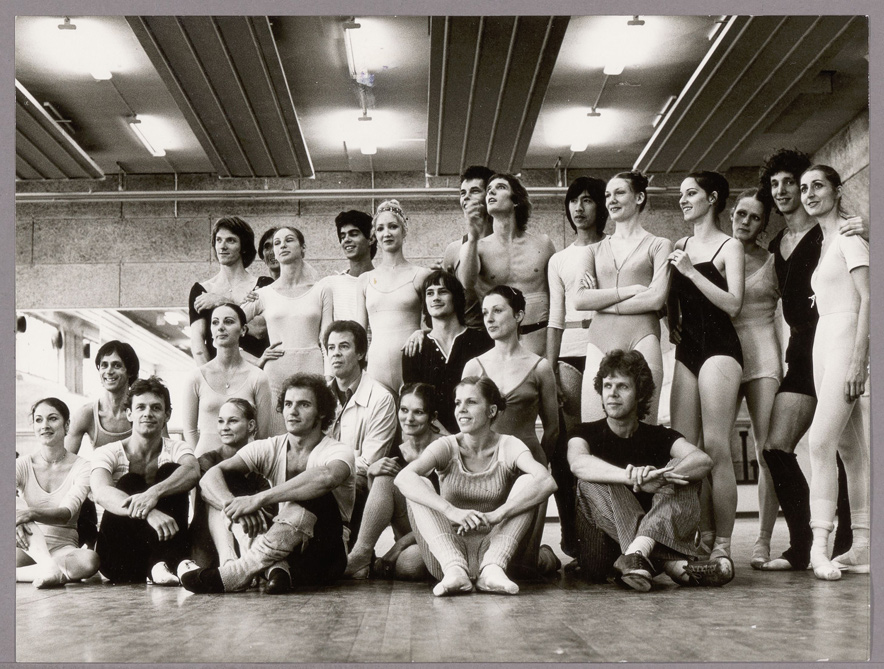
Collective Symphony
On the occasion of the 700th anniversary of the city of Amsterdam, Rudi van Dantzig, Hans van Manen and Toer van Schayk are commissioned by the municipality to create their first – and only – joint work: Collective Symphony, to Stravinsky's Symphony in C. The ballet is very successful, and not just for the way it challenges ballet fans to work out who choreographed which sections. Also for the 700th anniversary, Dutch National Ballet dances David Lichine’s Graduation Ball, for six consecutive evenings at the RAI, in Amsterdam, during the MOKUM-700 event.
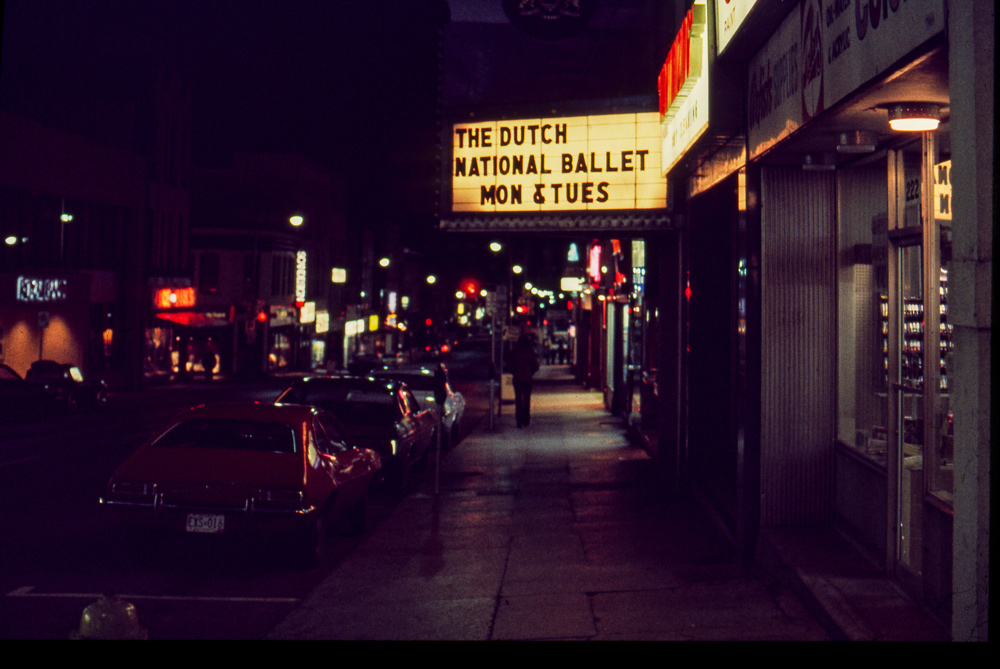
Tour to Brazil and Canada
The company goes on a one-month tour to Brazil (19 performances in Belo Horizonte, São Paulo and Rio de Janeiro) and Canada (5 performances in Ottawa and Toronto).
75 / 76

Alexandra Radius enjoys international success with Rudolf Nureyev
Principal dancer Alexandra Radius becomes one of the regular partners of the Russian star dancer Rudolf Nureyev. Their performances in the Netherlands and guest appearances abroad, particularly dancing the pas de deux from Le Corsaire and the third act of La Bayadère, receive high acclaim. With Dutch National Ballet, Van Dantzig creates Blown in a Gentle Wind for Nureyev.
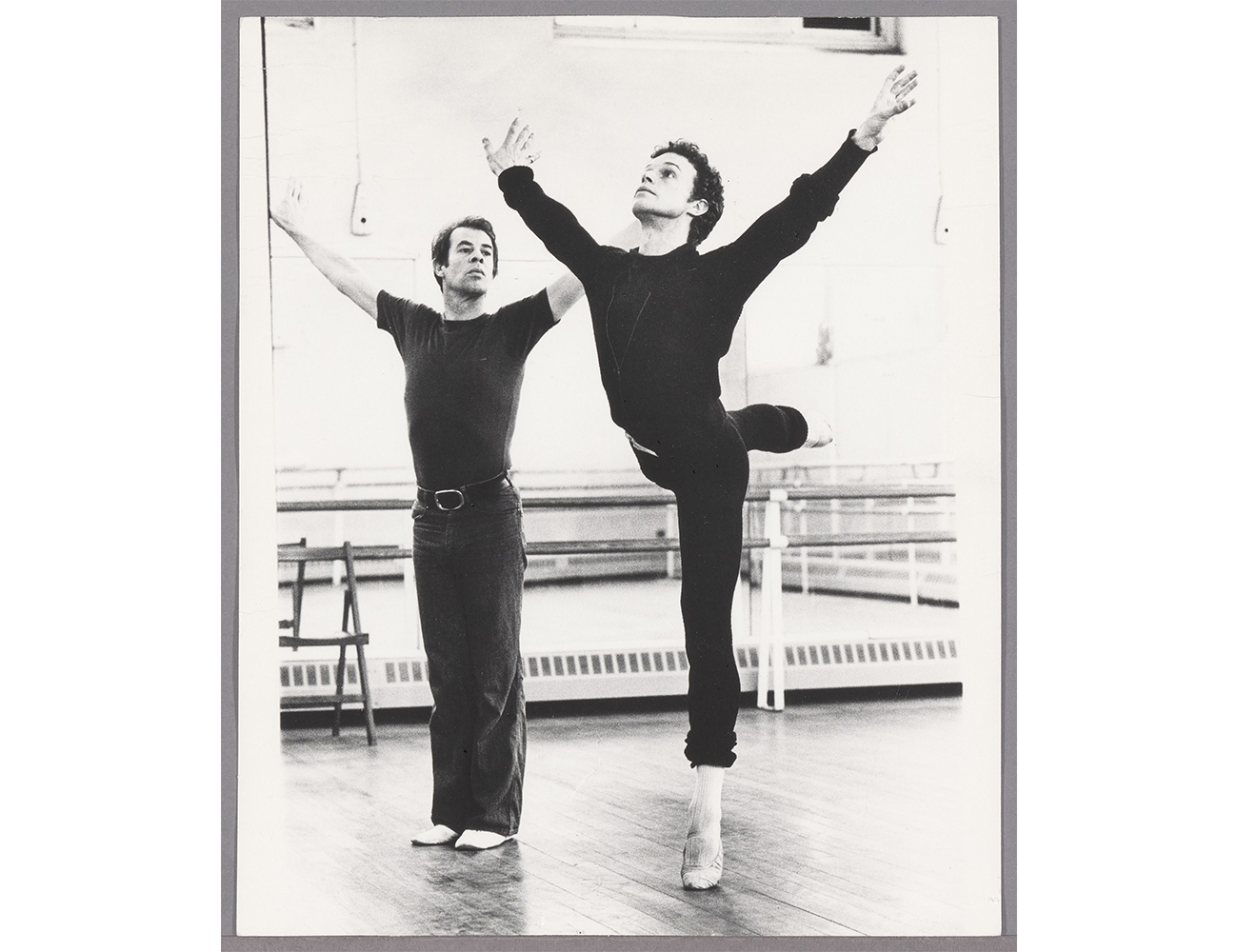
Four Schumann Pieces and Metaforen
Hans van Manen creates his first work for a company abroad: Four Schumann Pieces, made for The Royal Ballet, in London, with star dancer Anthony Dowell in the main role. A few months later, the ballet has its premiere with Dutch National Ballet, with Han Ebbelaar in Dowell’s role. Another important Van Manen acquisition this season is Metaforen, originally created for Nederlands Dans Theater, in 1965. Both works are still regularly performed to great acclaim in the Netherlands and abroad.
76 / 77
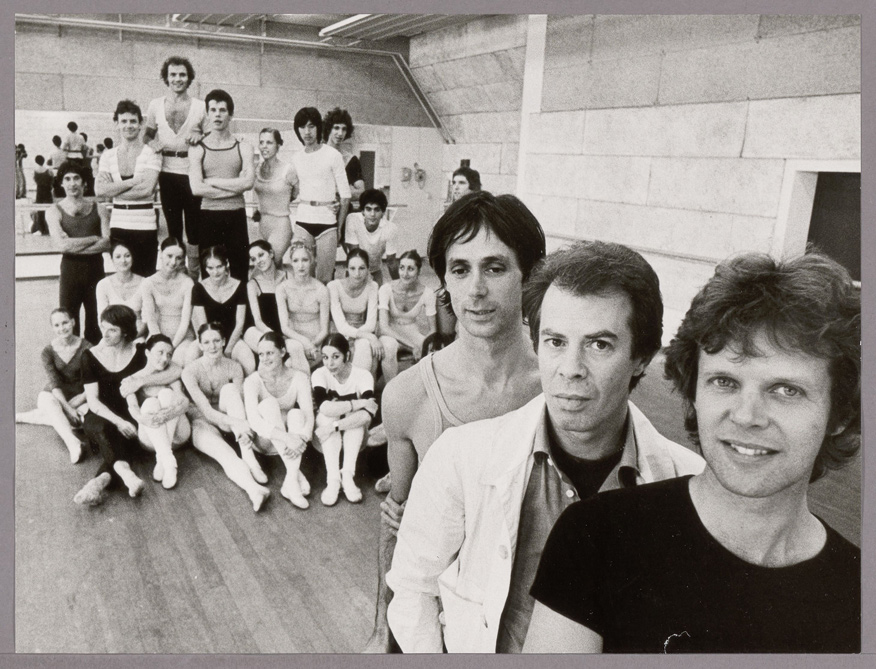
Three Van's
Toer van Schayk is appointed resident choreographer, alongside Rudi van Dantzig and Hans van Manen. In the 1970’s and 80’s, the three Van’s turn out to be an artistic gold mine. Dutch National Ballet creates an international furore with their daring contemporary creations.
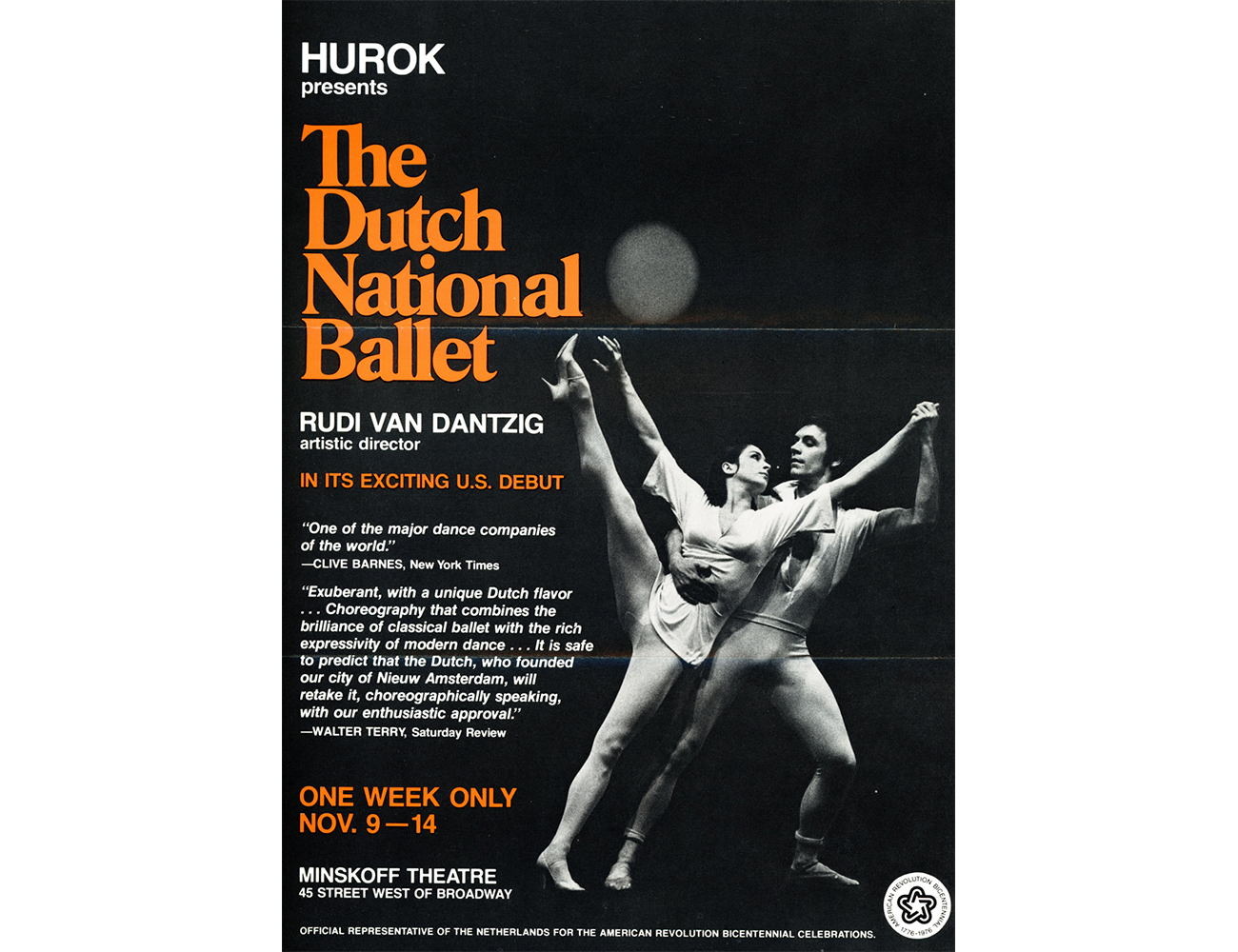
Debut in New York
In November 1976, the company makes its American debut in the Minskoff Theatre on Broadway, New York, on the occasion of the 200th anniversary of the United States. In the New York Times, the leading American dance critic Clive Barnes wrote, "Most national companies are very safe and play secure. The Dutch do not. They are perfectly prepared to be outrageous and do not care if they outrage (..) The company is a strong one, and its refreshingly irreverent approach to classic ballet is extraordinarily welcome."
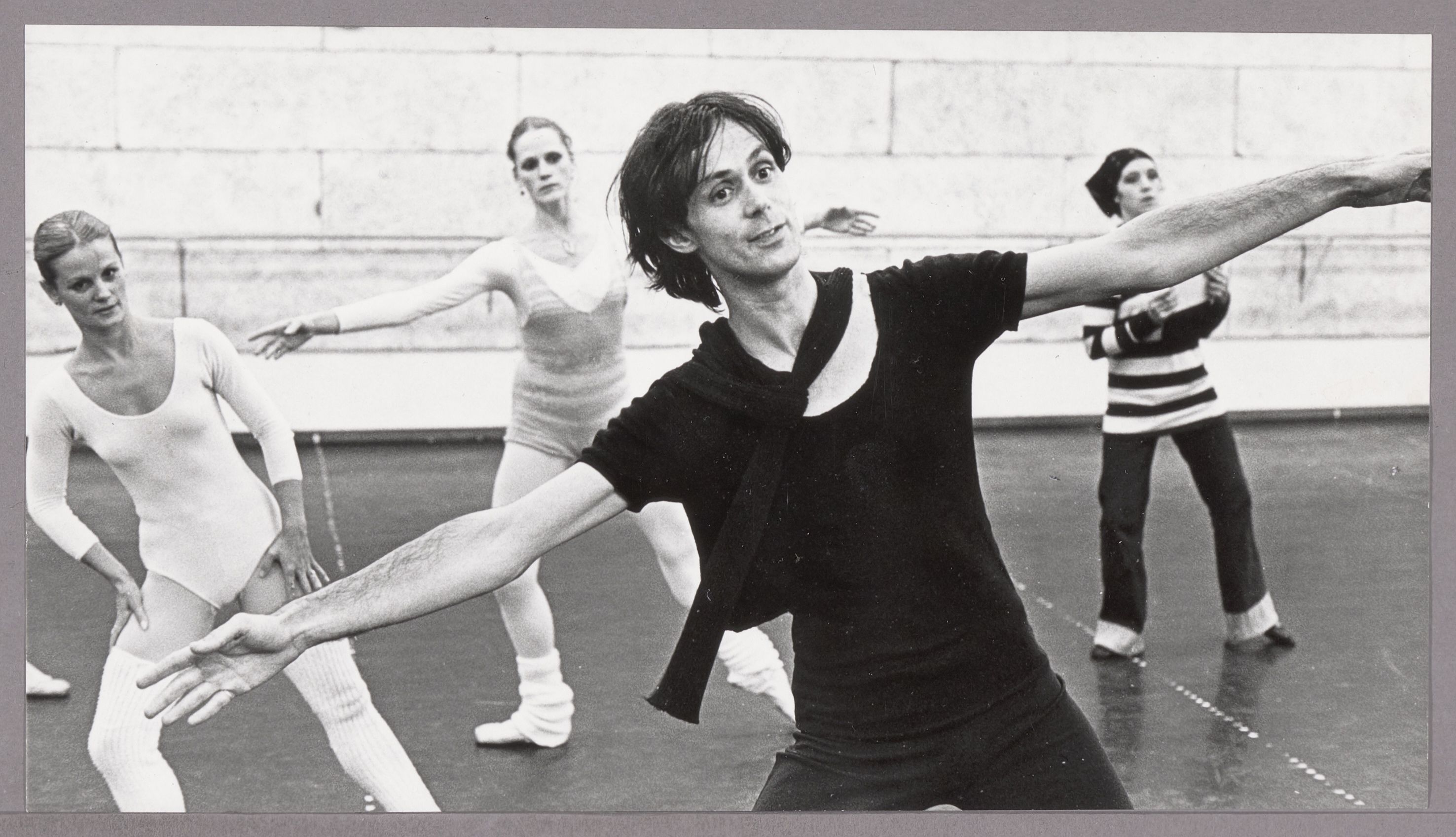
In het Voetspoor van de Dans
Dutch National Ballet gives its first education programme: In het Voetspoor van de Dans (In the Footsteps of Dance), compiled by Toer van Schayk, who also presents the programme. Before the interval, there is an overview of the history of dance, presented in words, with slide and film projections and danced excerpts. After the interval, Van Dantzig’s Nachteiland and Ogenblikken and Van Manen’s Kwintet are danced in their entirety by the younger generation of dancers.
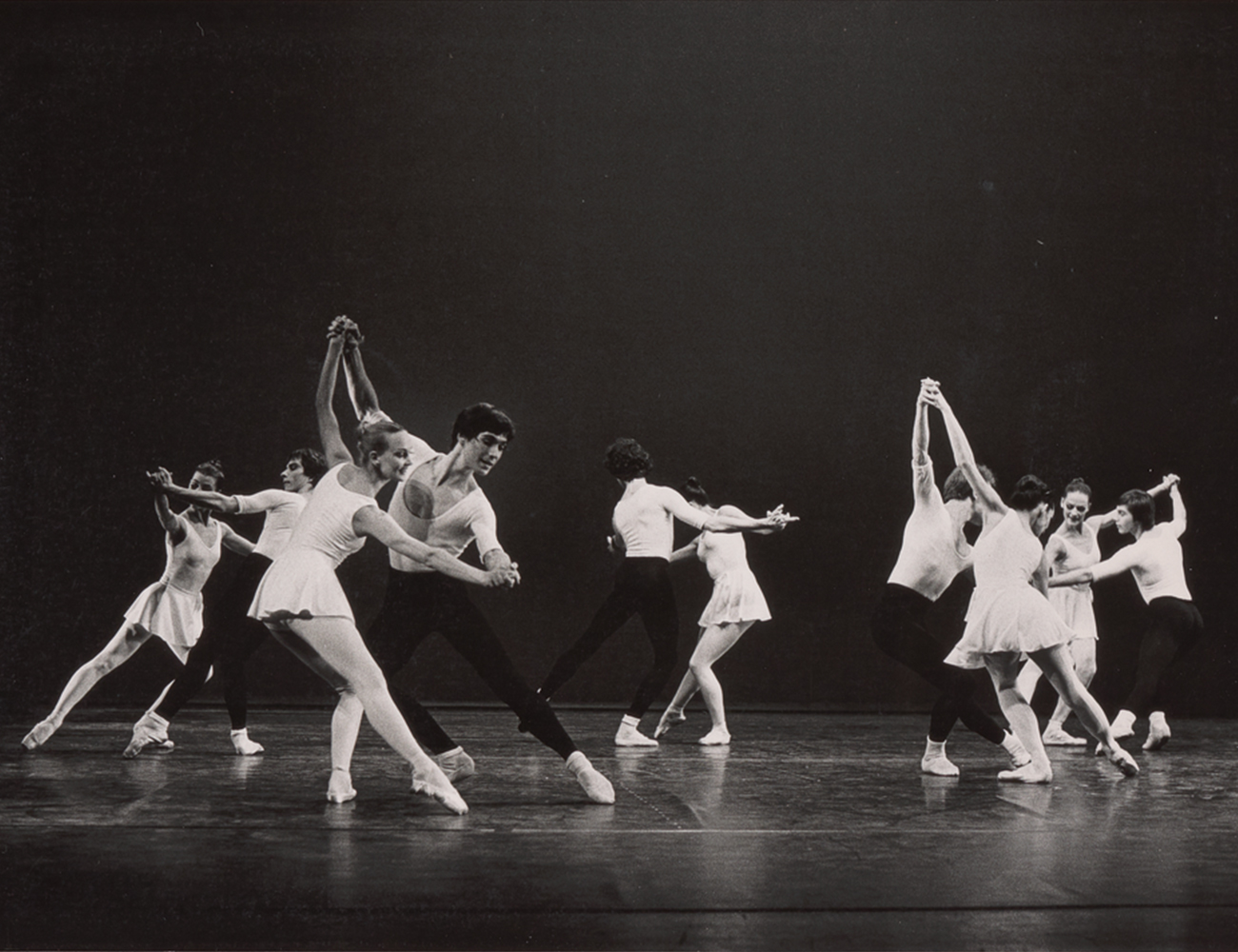
Balanchine-programme
For the first time, Dutch National Ballet dedicates a complete programme to Russian-American grandmaster George Balanchine. It includes Donizetti Variations, The Four Temperaments, Symphony in C and new for the company, Le tombeau de couperin, the 15th Balanchine ballet on the Dutch National Ballet repertoire. Later this season, the company also acquires Capriccio (better known as Rubies), which features a starring role for soloist Jeanette Vondersaar.
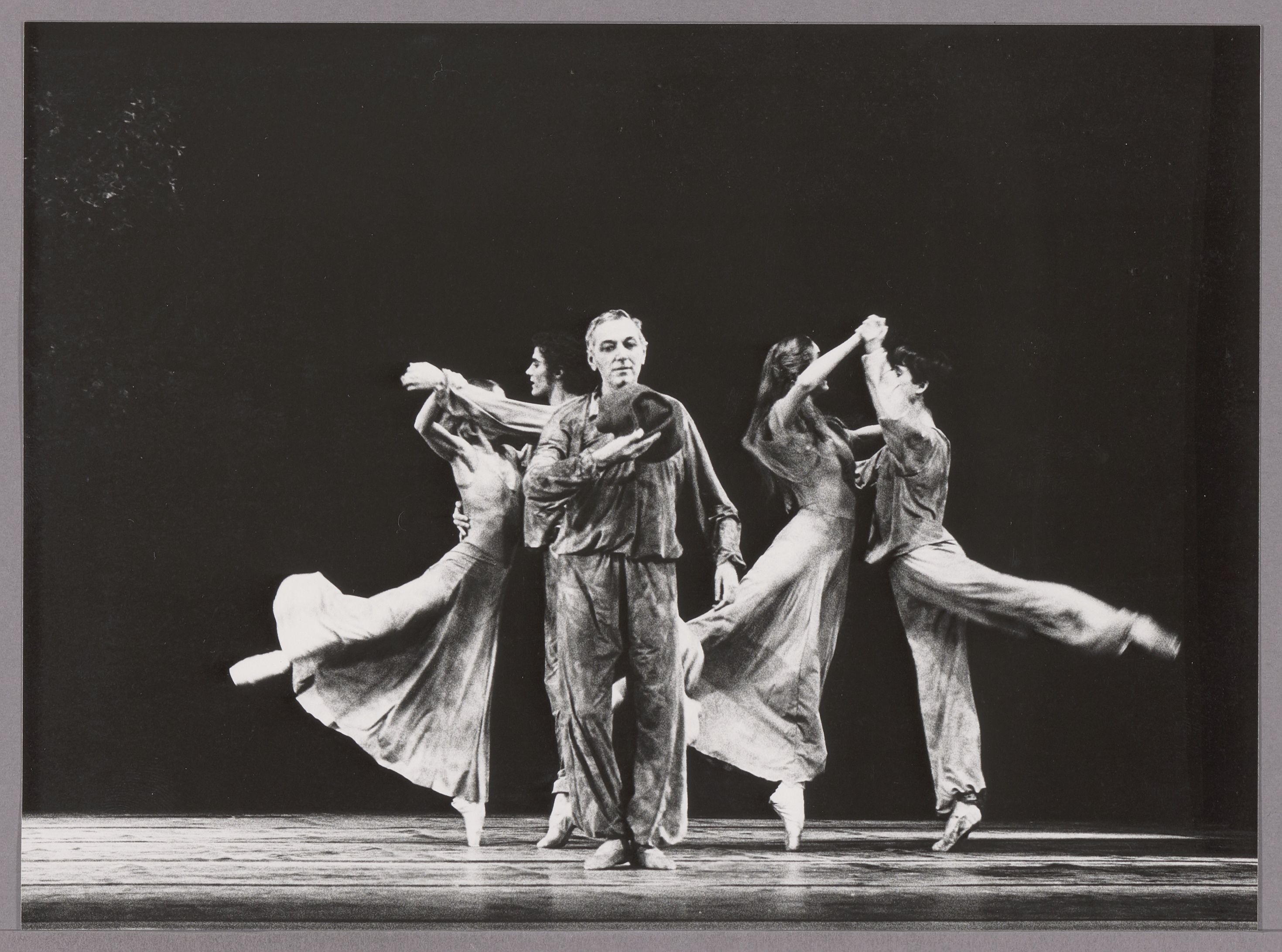
Johan Mittertreiner’s anniversary
Character dancer Johan Mittertreiner celebrates his 40th anniversary as a performer – an unprecedented event. At his anniversary performance, he appears in the role created for him by Toer van Schayk in his new ballet Jeux.

Vier letzte Lieder
Rudi van Dantzig impresses with his new ballet Vier letzte Lieder, set to Richard Strauss' swan song of the same name. The choreography is still performed in the Netherlands and abroad today. At its world premiere, the ballet was danced - according to the press, ‘with an unbeatable commitment’ - by Monique Sand and Francis Sinceretti, Valerie Valentine and Wade Walthall, Alexandra Radius and Han Ebbelaar, Sonja Marchiolli and Henny Jurriëns, and Clint Farha in the role of the Angel of Death.

New Giselle
Englishman Peter Wright, director of Sadler's Wells Royal Ballet (now Birmingham Royal Ballet), is creating a new production of Giselle for Dutch National Ballet. The production, for which Peter Farmer designs the sets and costumes, has been one of the great classical success productions on the Dutch National Ballet repertoire for 20 years. At the premiere in 1977, Alexandra Radius dances the title role ‘very moving to downright moving’, according to Het Parool, and her partner Han Ebbelaar's performance is ‘of the same high level’, according to the newspaper.
77 / 78
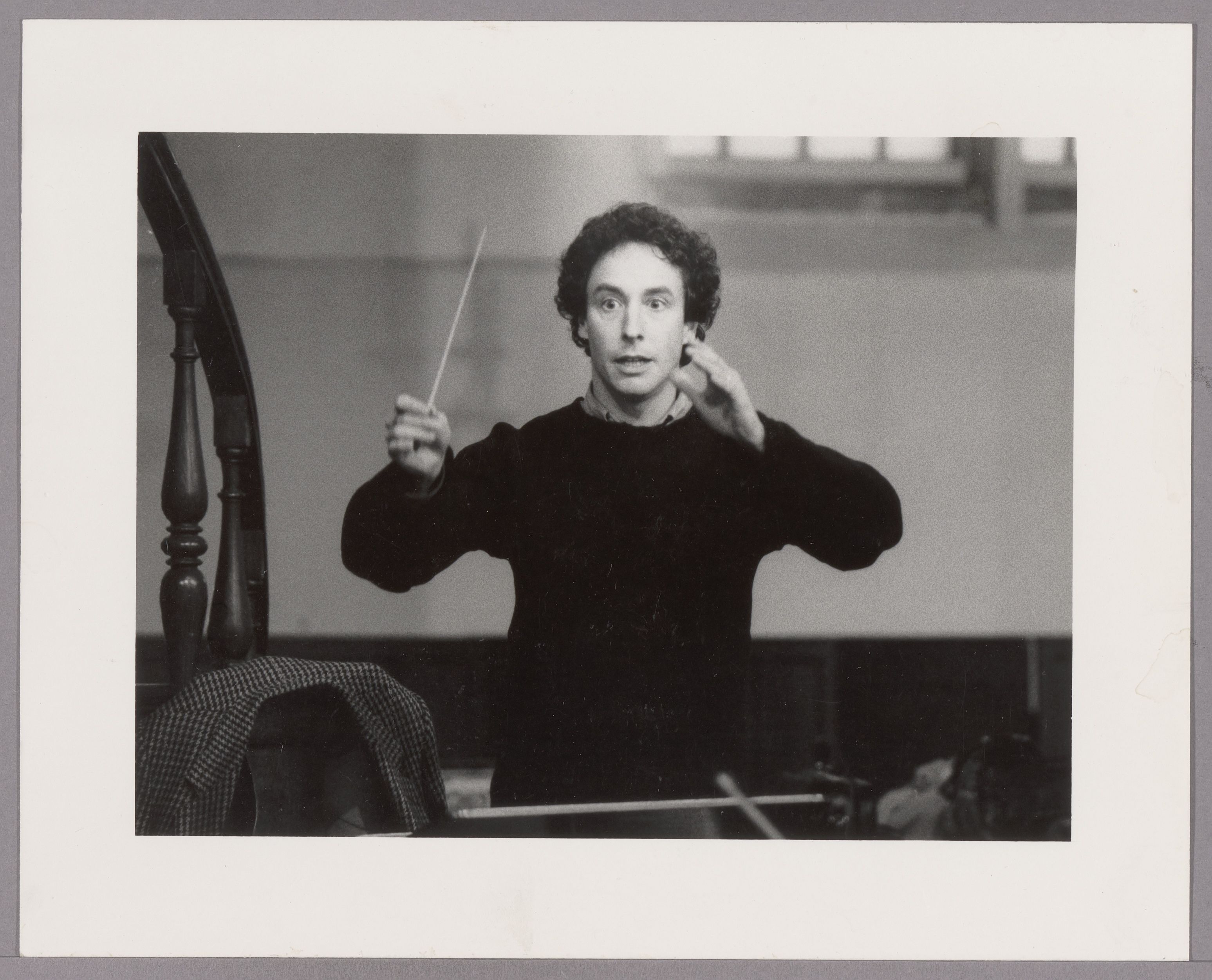
Adam Gatehouse
After previously working with Dutch National Ballet as a guest conductor, this season Adam Gatehouse is appointed as regular conductor and musical director, a position he will hold until 1988.
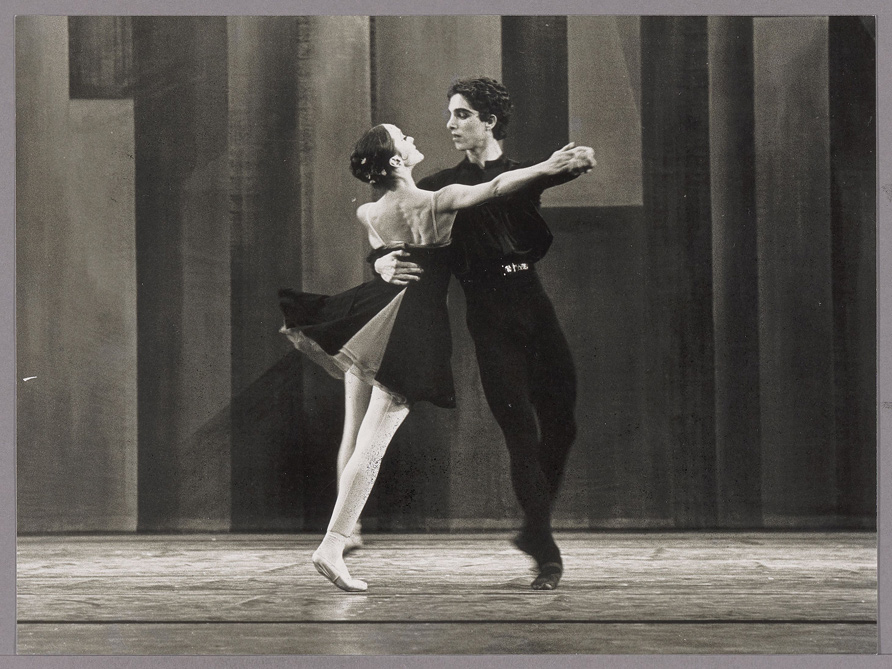
5 Tangos
In the autumn of 1977, Hans van Manen creates the world hit 5 Tangos. The ballet, starring principal dancers Clint Farha and Sonja Marchiolli at the premiere, is still danced by companies all over the world today. Through 5 Tangos, Van Manen also introduces the Netherlands to the music of Astor Piazzolla, king of the tango nuevo.
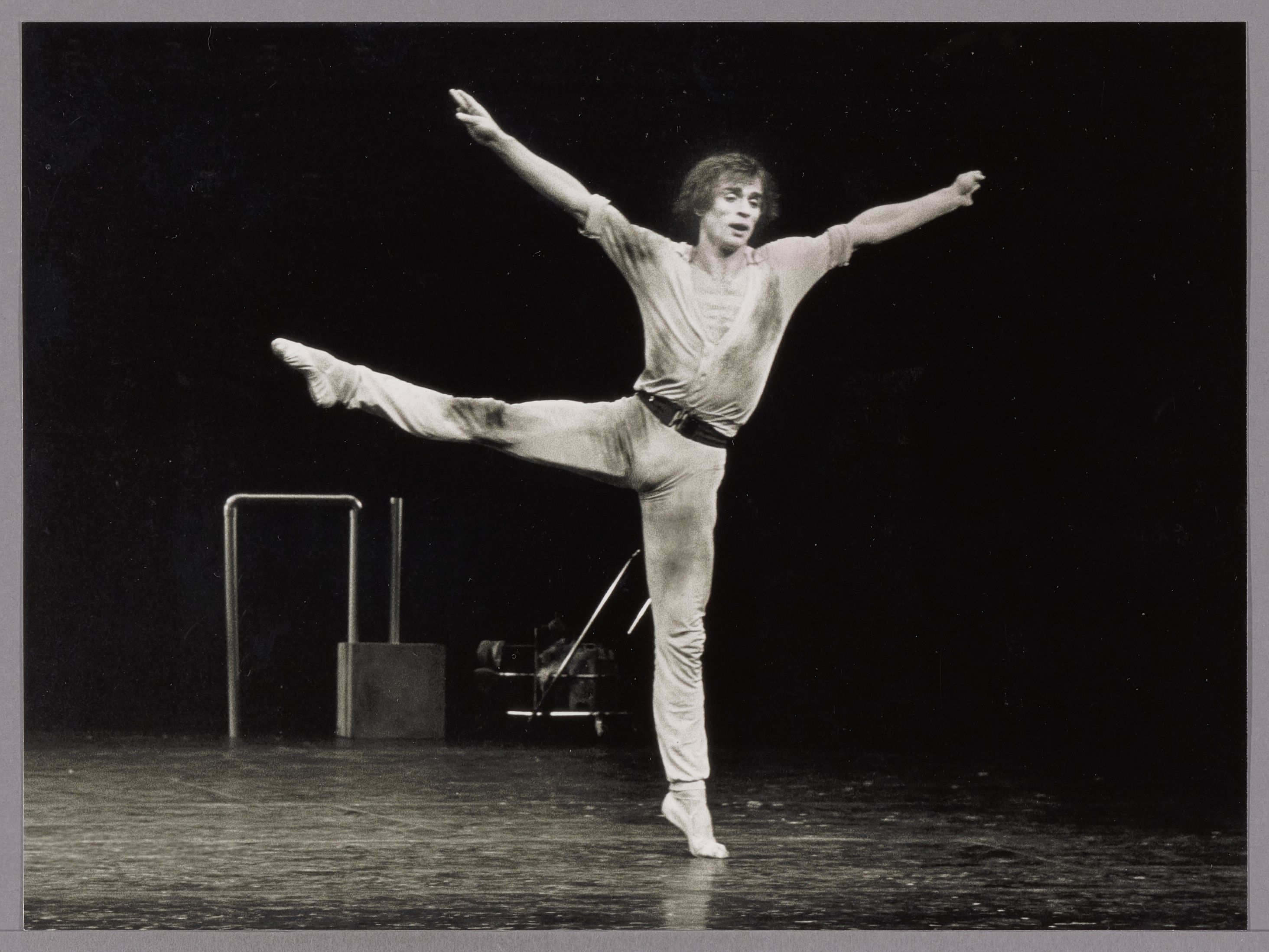
Ballets for Nureyev
Following The Ropes of Time and Blown in a Gentle Wind, Rudi van Dantzig creates another ballet for Rudolf Nureyev, About a Dark House. Toer van Schayk also creates a premiere work for the Russian star dancer, Faun. And Nureyev dances the main role in Hans van Manen’s Four Schumann Pieces for the first time.
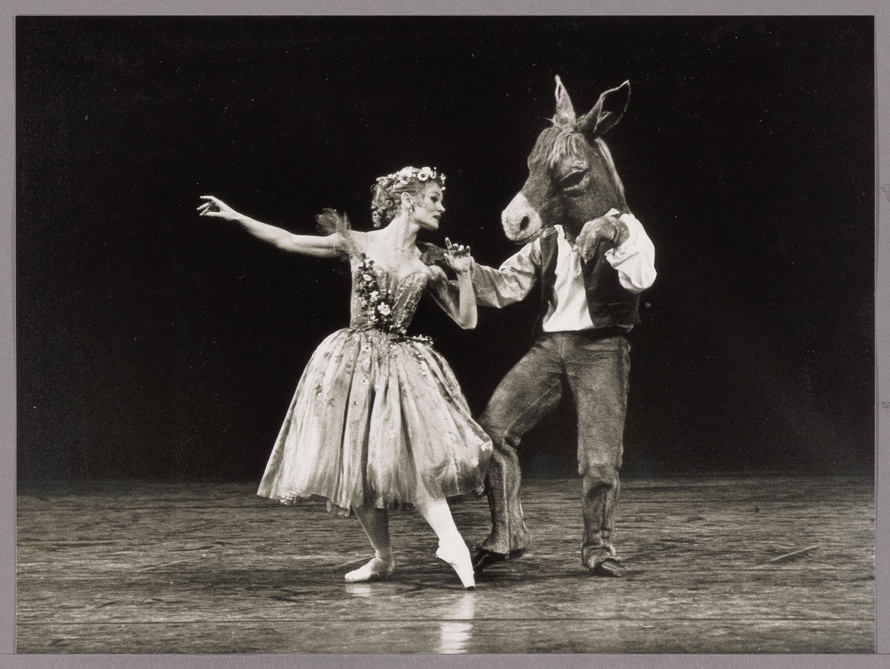
The Dream
The Dream, by the British choreographer Sir Frederick Ashton, who is regarded as one of the most important founders of the traditional English ballet style and technique, is the first of his ballets to be taken into Dutch National Ballet’s repertoire.

Choreographic workshop
Following an earlier incidental initiative, Dutch National Ballet now starts up an annual choreographic workshop, where company dancers get the chance to explore and develop their talents as a choreographer. Eight dancers/choreographers take part in the first edition.
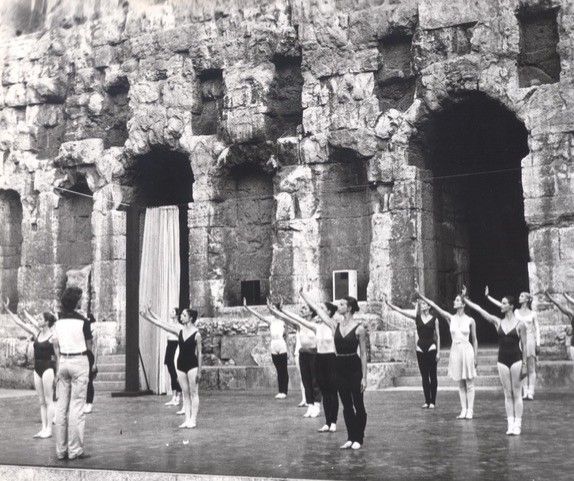
Acropolis
Besides touring once again to New York and London (both with Nureyev as a guest artist), the company performs for the first time at the Herodes Atticus Theatre in Athens, the famous open-air theatre at the foot of the Acropolis.
78 / 79
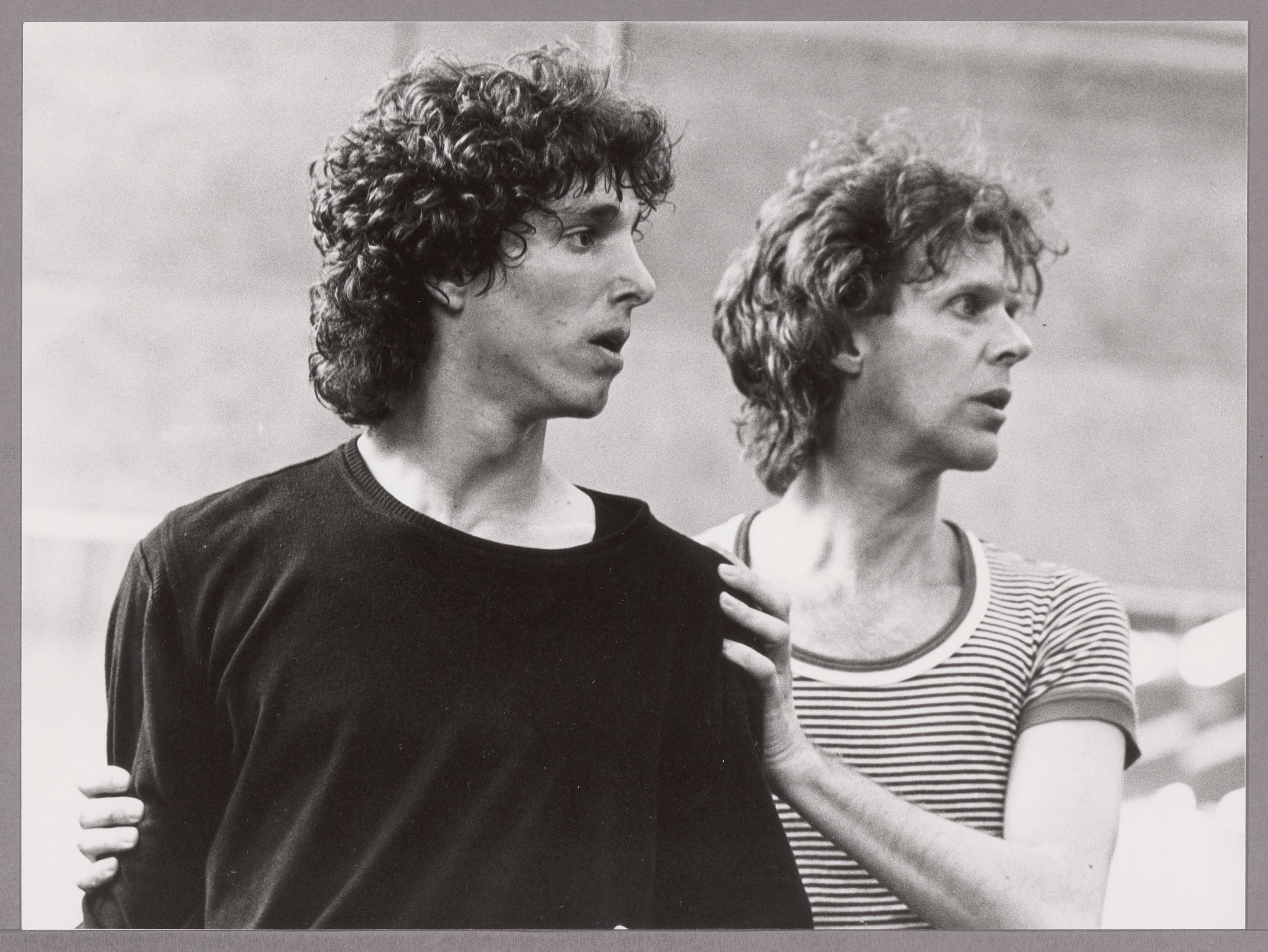
Clint Farha promoted to principal
During a tour of the Federal Republic of Germany, the young American dancer Clint Farha replaces an injured Rudolf Nureyev, partnering Alexandra Radius in the pas de deux from Le Corsaire. Farha’s performance is so spectacular that Rudi van Dantzig promotes him to principal straight after the performance, in his dressing room.
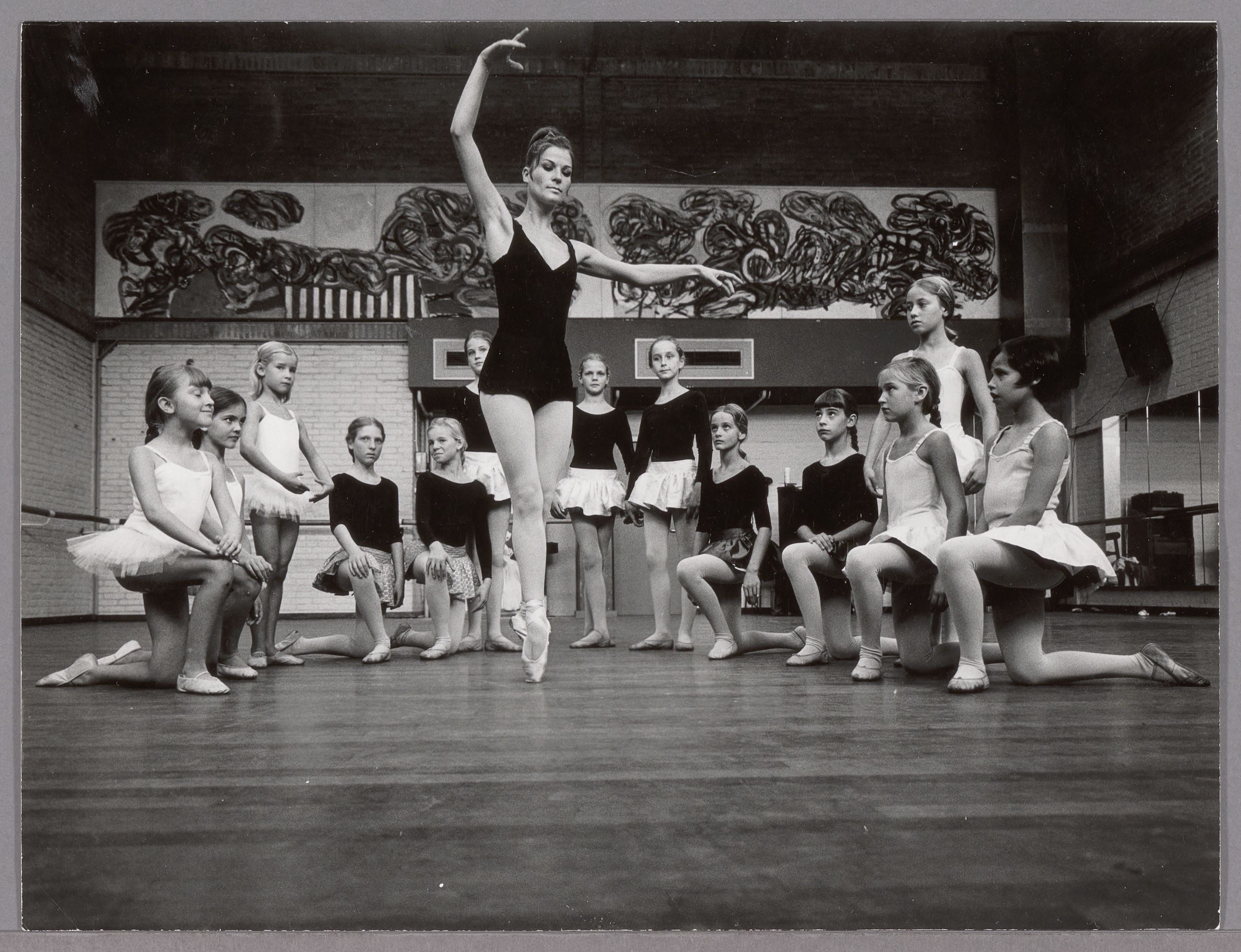
Death of Olga de Haas
On 1 September 1978, principal dancer and darling of the Dutch ballet audience, Olga de Haas, dies at the age of just 33. Her tragic death, partly due to anorexia nervosa, still stirs the emotions. Following previous publications about her by Rudi van Dantzig and Anna Aalten, the journalist Femke van Weggen wrote a new biography, in 2016, of De Haas, who gave her final, moving performance in 1975, as Juliet in Van Dantzig’s Romeo and Juliet.
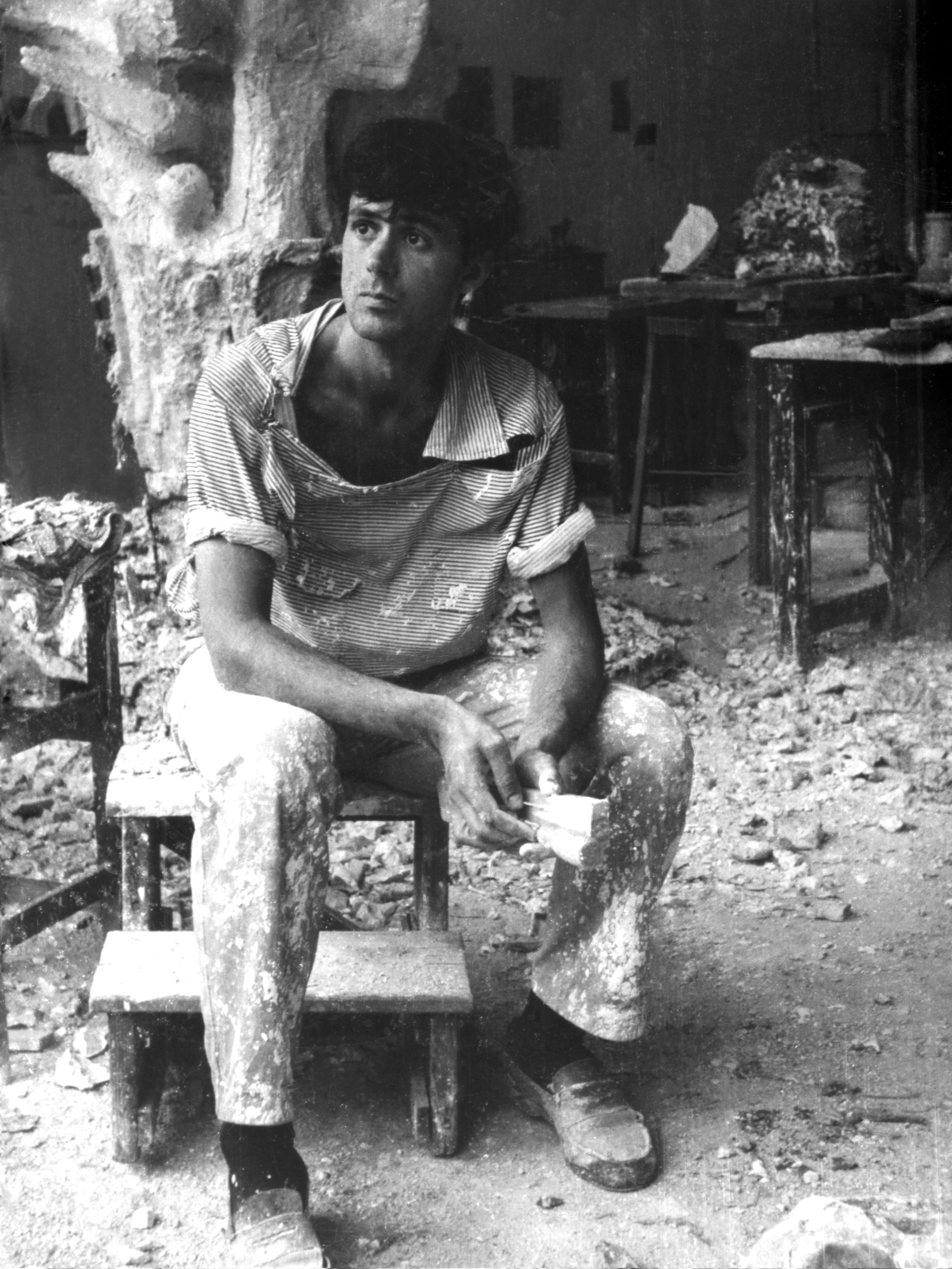
Royal honour for Toer van Schayk
Choreographer and designer Toer van Schayk (who ended his dancing career in 1976) is appointed Knight of the Order of Orange-Nassau.

Live/Life
One of the biggest crowd-pullers of the seventies is the double bill Live/Life. The six performances in the Carré Theatre draw audiences of over 7200, and when the production is revived in the 1979/1980 season, the total rises to 10,180 – divided over ten performances. The large-scale, politically engaged (and therefore linked to current events) Life, created by Rudi van Dantzig and Toer van Schayk, is never performed again. But over 40 years later, the success of Hans van Manen’s iconic video ballet Live is undiminished.
79 / 80
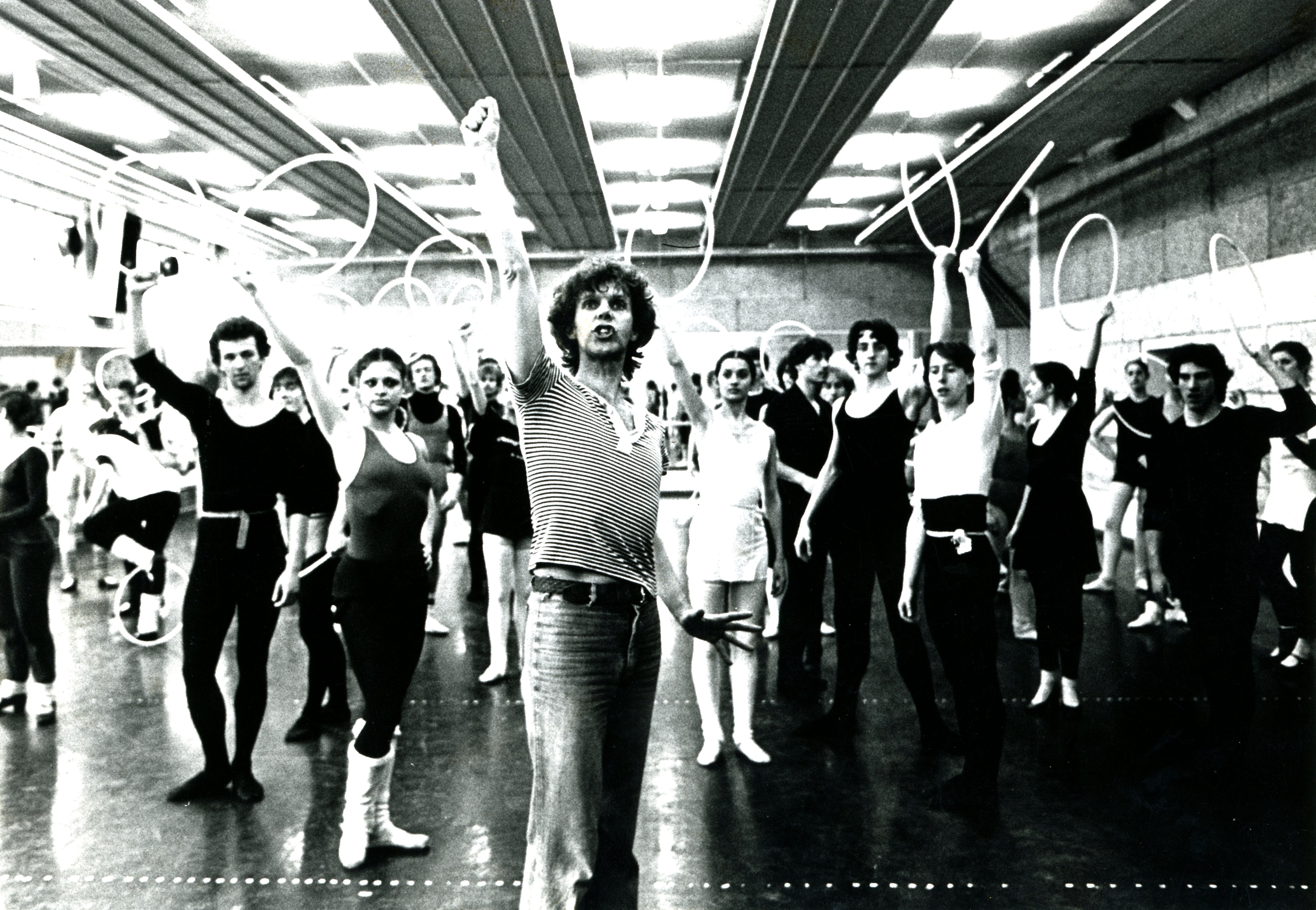
Rudi van Dantzig’s anniversary
Artistic director Rudi van Dantzig celebrates his 25th anniversary as a choreographer. The anniversary programme presents his debut work, Nachteiland, alongside three of his most famous ballets: Monument for a Dead Boy, Ramifications and Four Last Songs.
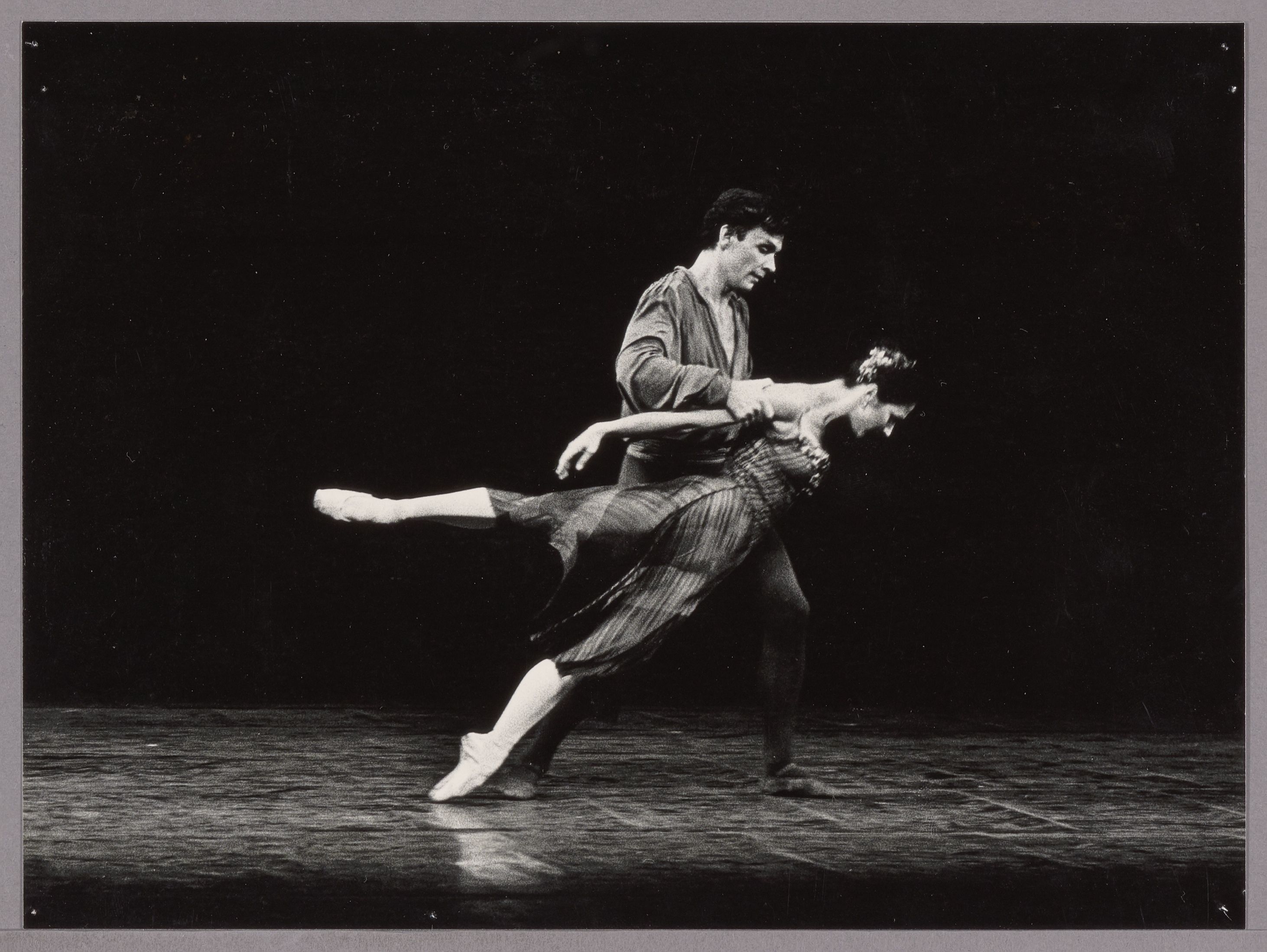
Anniversary of Alexandra Radius and Han Ebbelaar
Alexandra Radius and Han Ebbelaar also celebrate their 20th anniversary as a dance couple. Many guest artists from abroad perform at two anniversary performances, for which Van Dantzig creates the duet Voorbij gegaan. On the occasion, the couple are also presented with the Silver Medal of the City of Amsterdam. Radius and Ebbelaar use the anniversary gifts from their admirers to set up the foundation Stichting Dansersfonds '79, which is still encouraging, honouring and supporting Dutch dancers today.
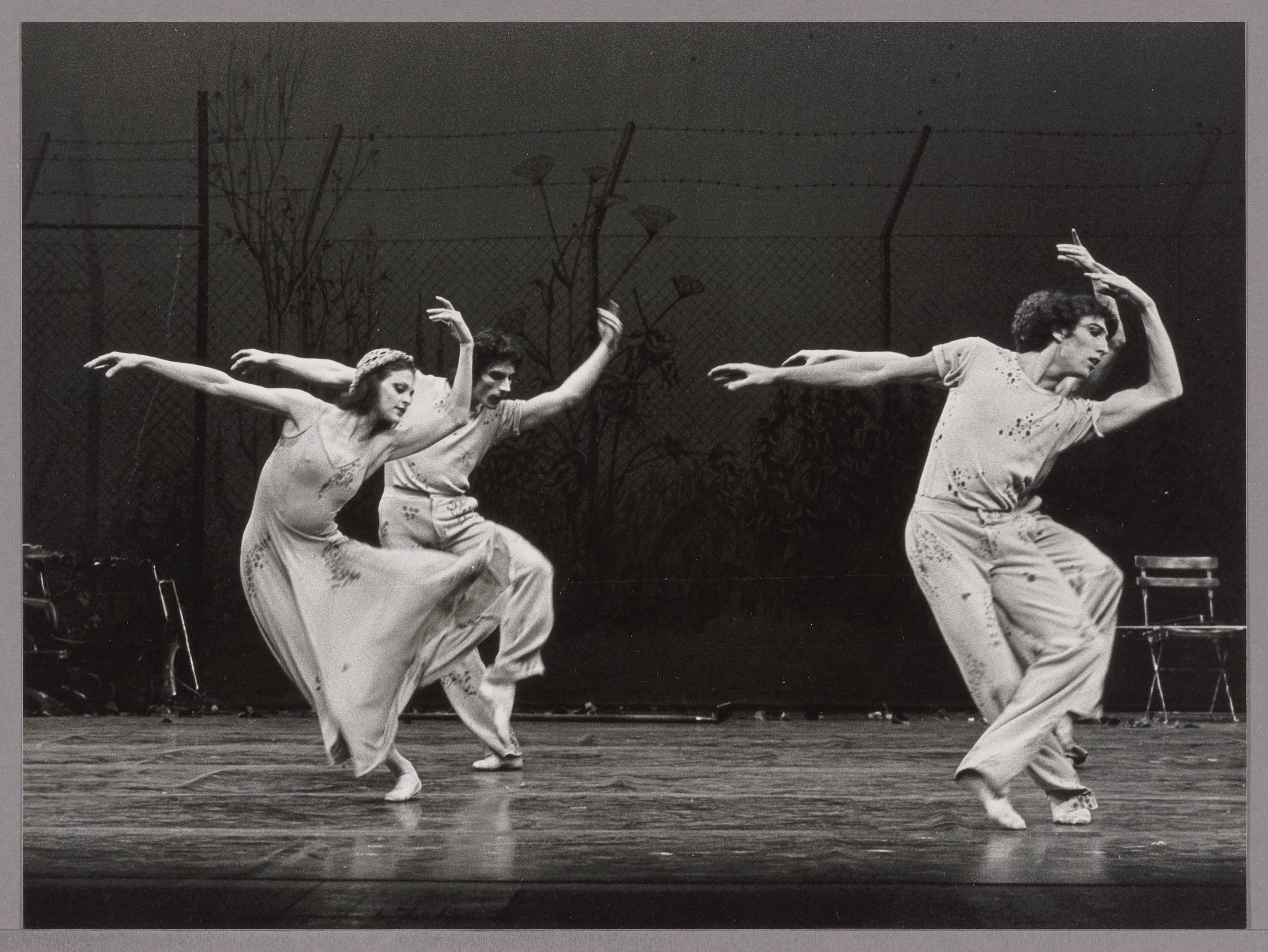
A Garden Unkempt
Toer van Schayk creates his second ballet for a foreign company. Following The Art of Saying Bye-Bye in 1973 (originally created for Scottish Theatre Ballet), he now makes a ballet for the Norwegian National Ballet, En gjengrud have (A garden unkempt), which also premieres with Dutch National Ballet in March 1980 as Een verwaarloosde tuin. NRC Handelsblad calls the ballet “a very important acquisition”.
Works Council
Dutch National Ballet gets an official Works Council, after having had a ‘Ballet Council’ since 1970 (which also included representatives from the management and the board).
80 / 81
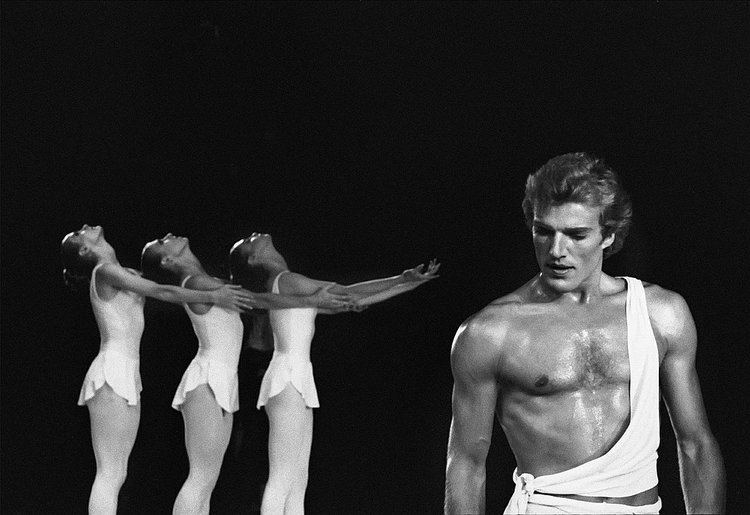
Guest artist Peter Martins
Peter Martins, star dancer (and later artistic director) of the famous New York City Ballet, appears as a guest artist on the occasion of the Dutch premiere of his ballet Sonate di Scarlatti. He dances the title role in Balanchine’s Apollon musagète, with Alexandra Radius, Jeanette Vondersaar and Joanne Zimmerman as his three muses.
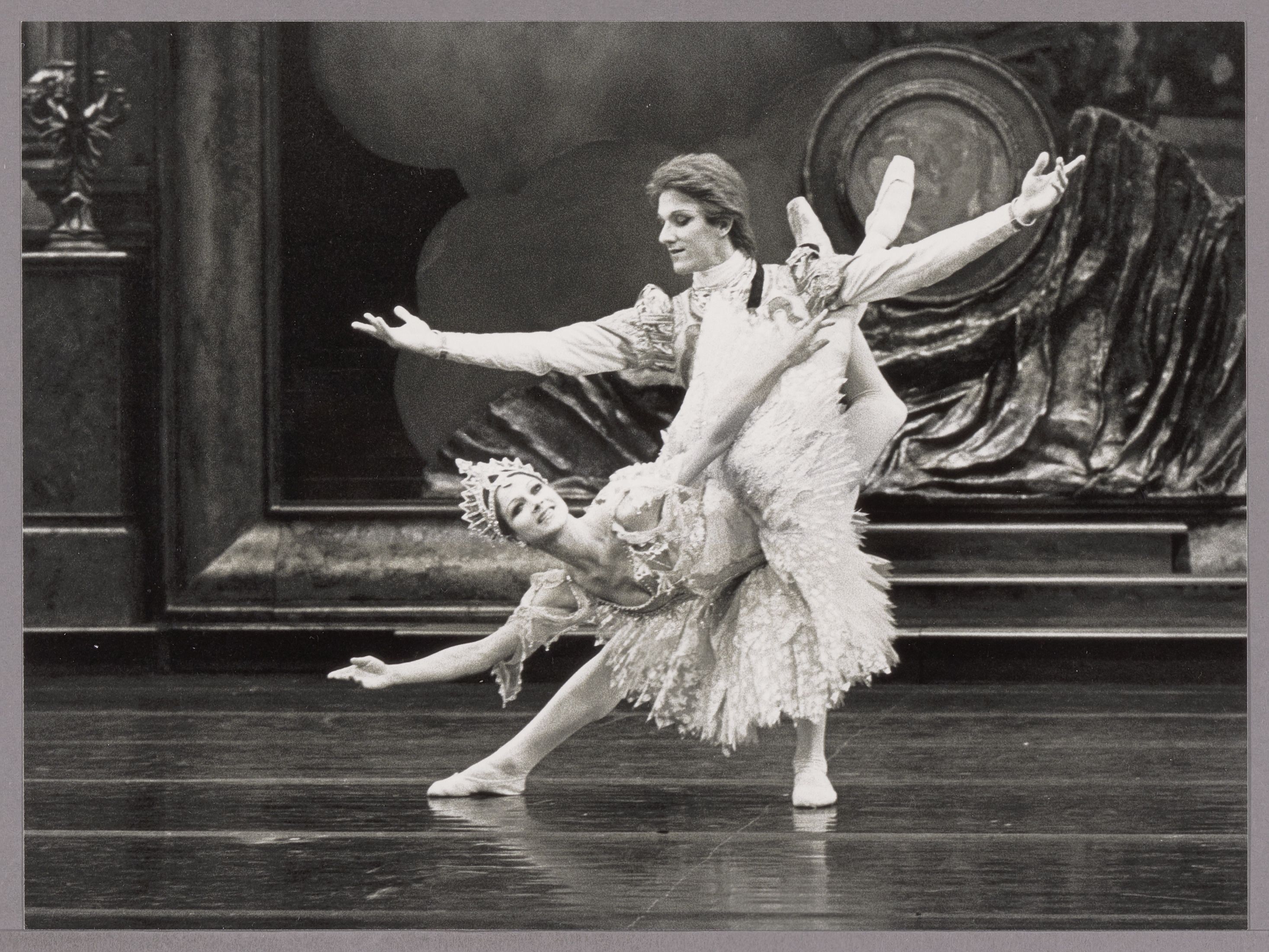
The Sleeping Beauty
A milestone in Dutch National Ballet’s history is Sir Peter Wright’s Sleeping Beauty, which premieres on 2 July 1981 at the Stadsschouwburg, in Amsterdam. Costing over 600,000 guilders, it is the most expensive production the company has presented to date.
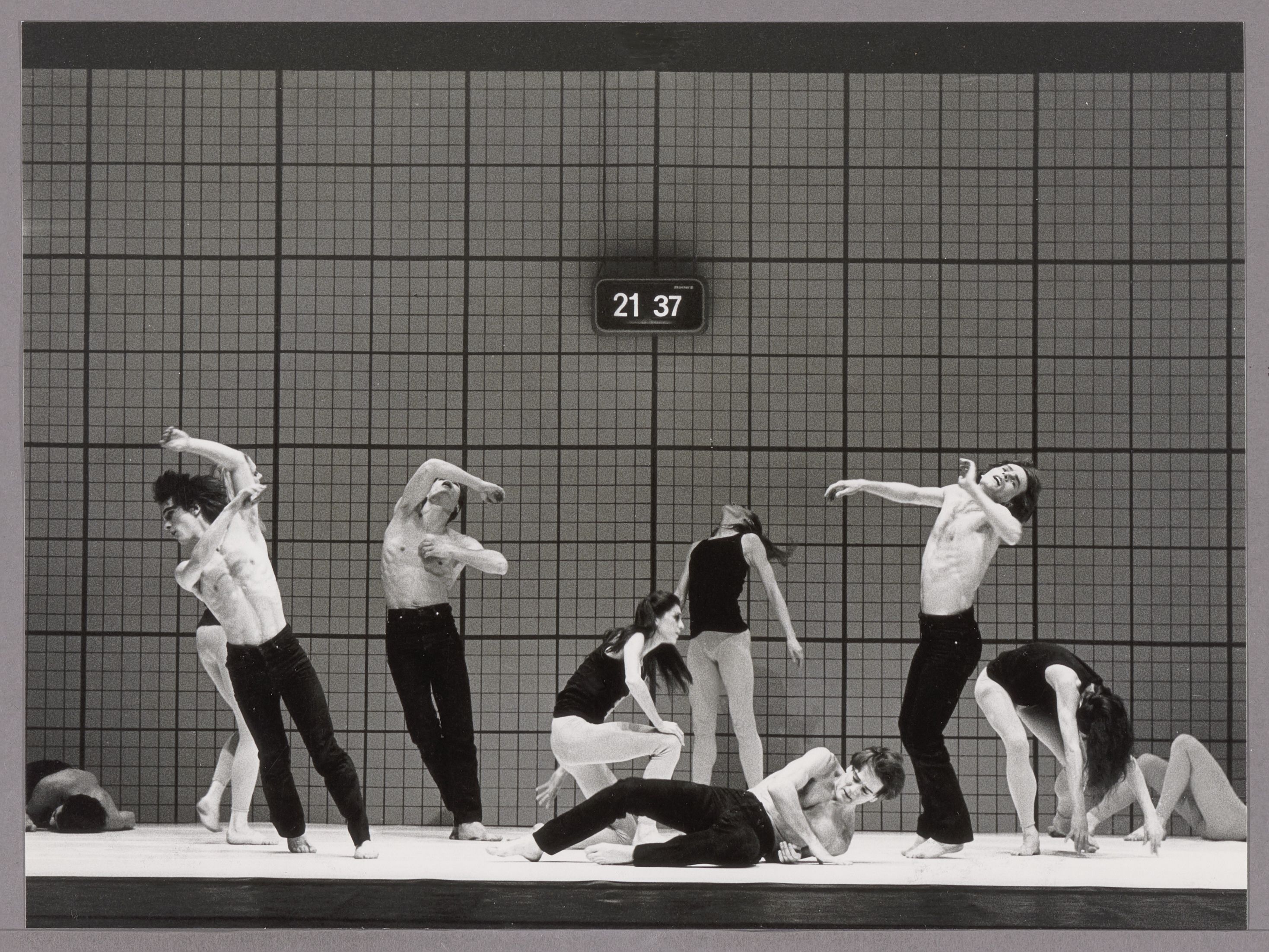
Situation
Of an entirely different order is Dutch National Ballet’s premiere of Hans van Manen’s Situation, originally created for Nederlands Dans Theater in 1970. For this work, the choreographer deliberately opts for irritating sounds – a volley of gunshots, the roar of fighter jets, the whine of mosquitos – “because”, as he said recently, “the whole ballet is about aggression and violence”.
Tour to Hong Kong and Indonesia
Dutch National Ballet goes on its first Asian tour, performing in Hong Kong and Jakarta, Indonesia.
